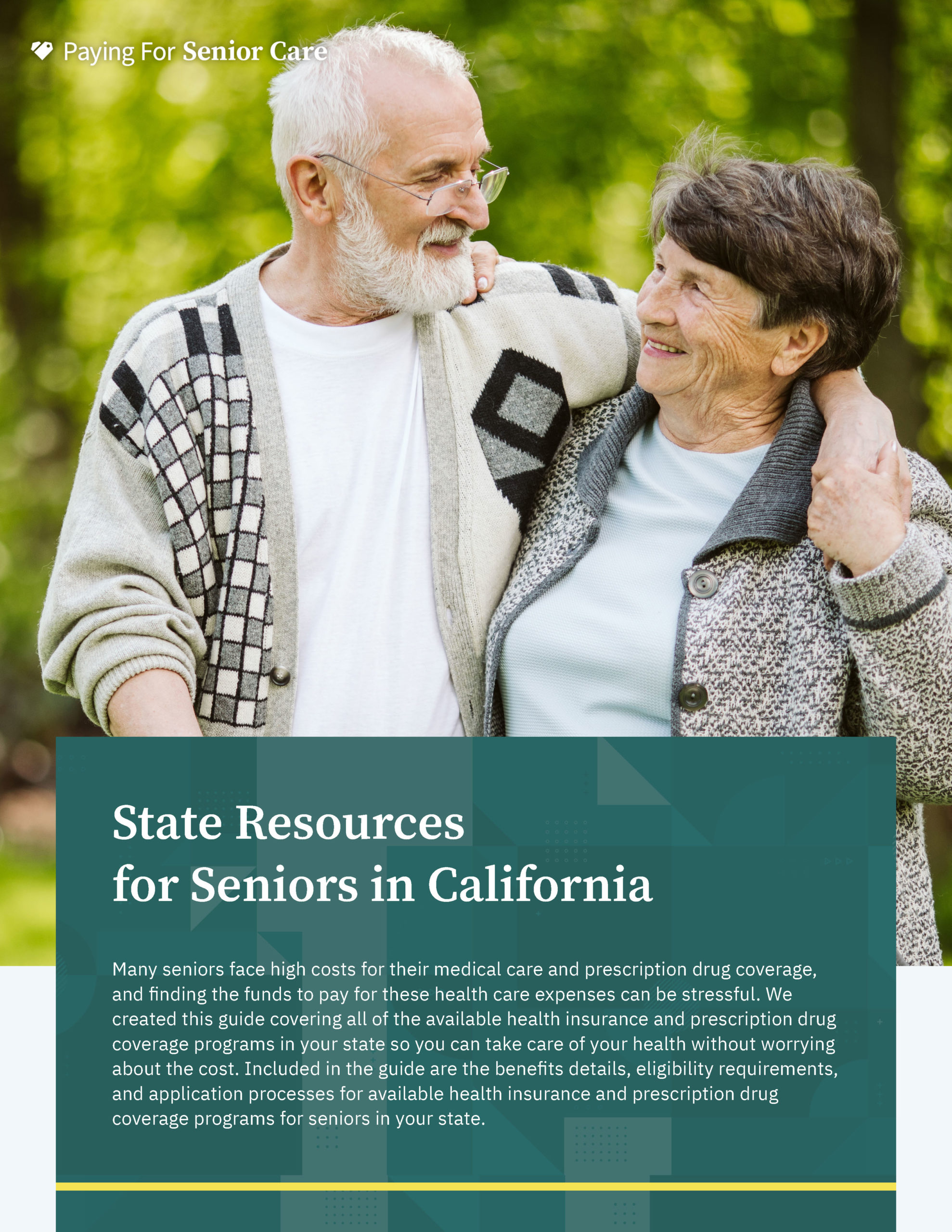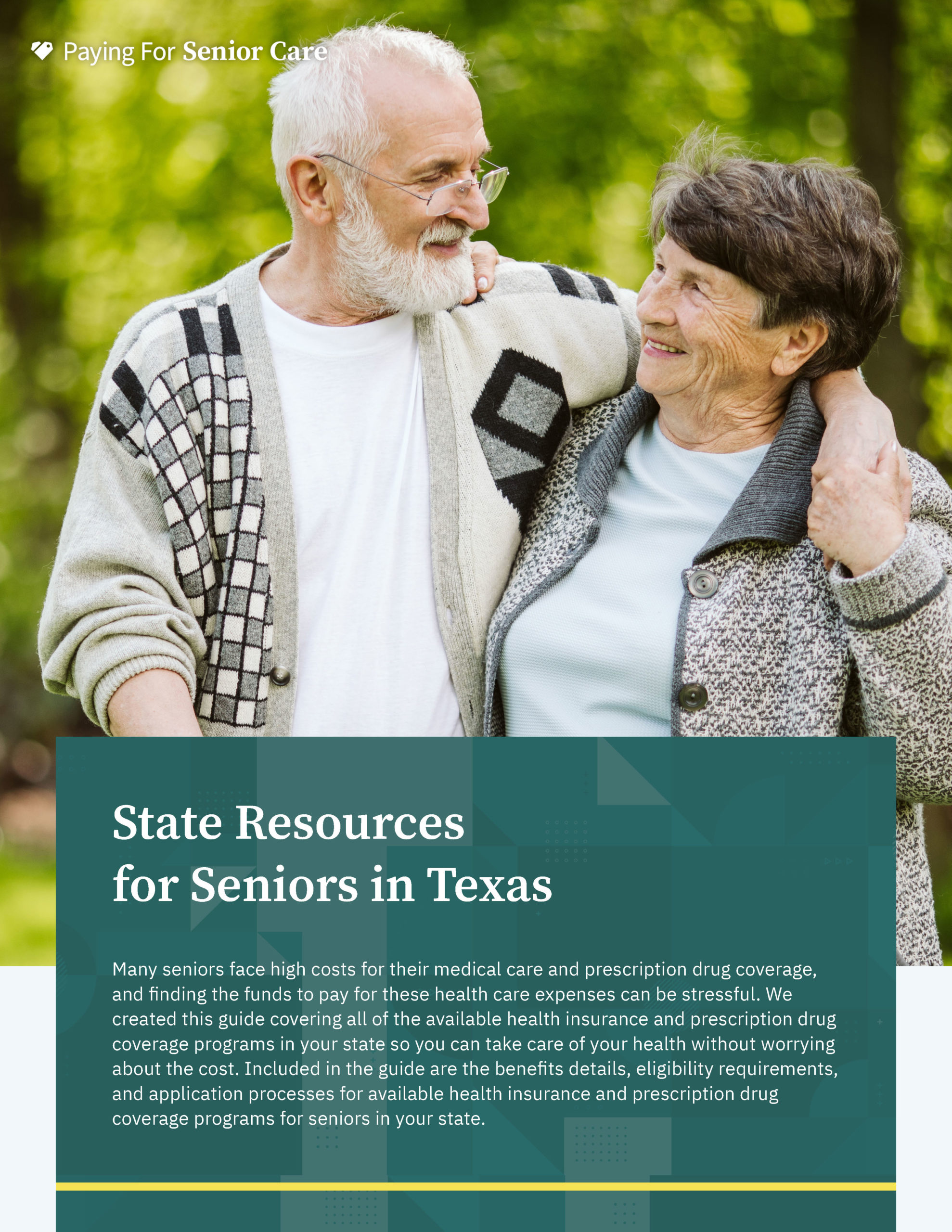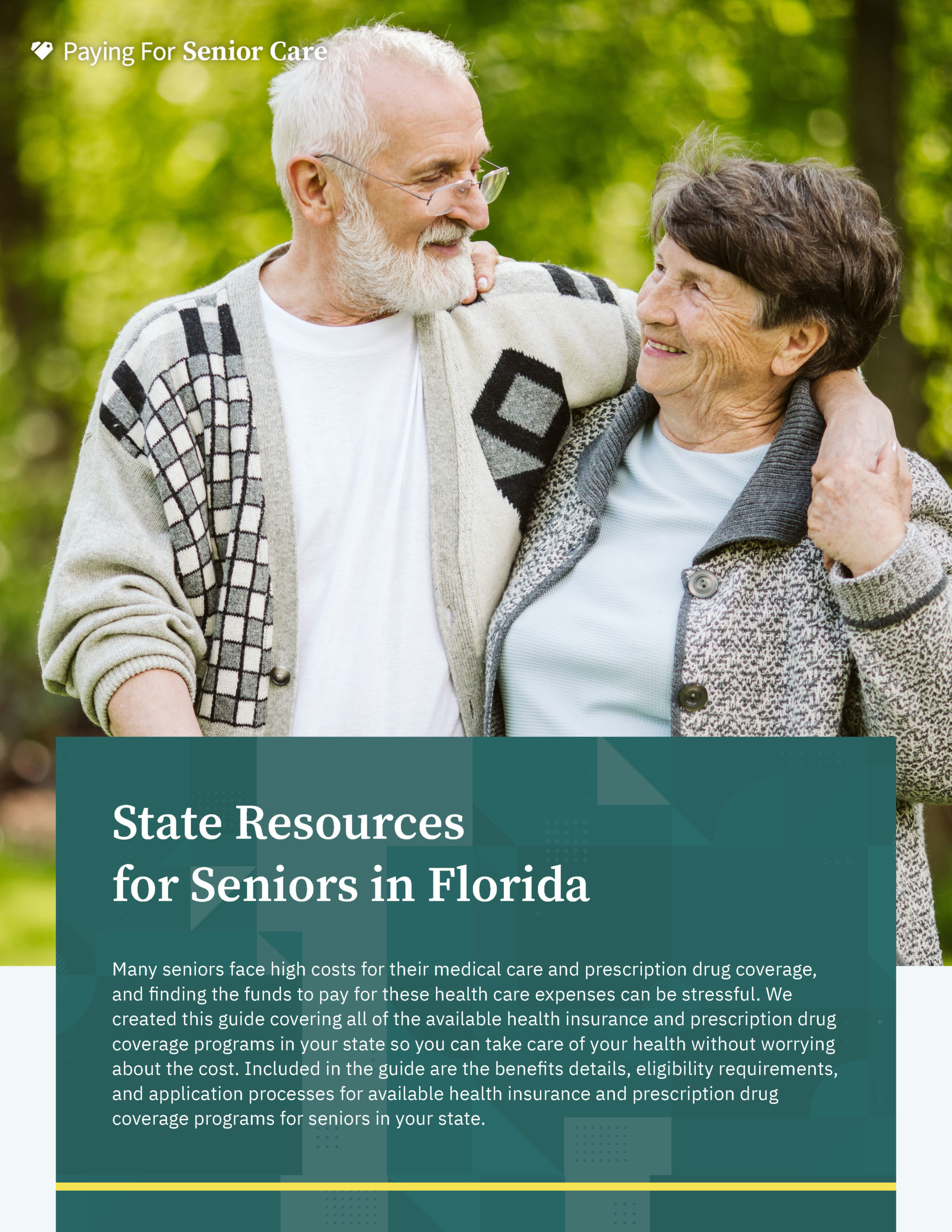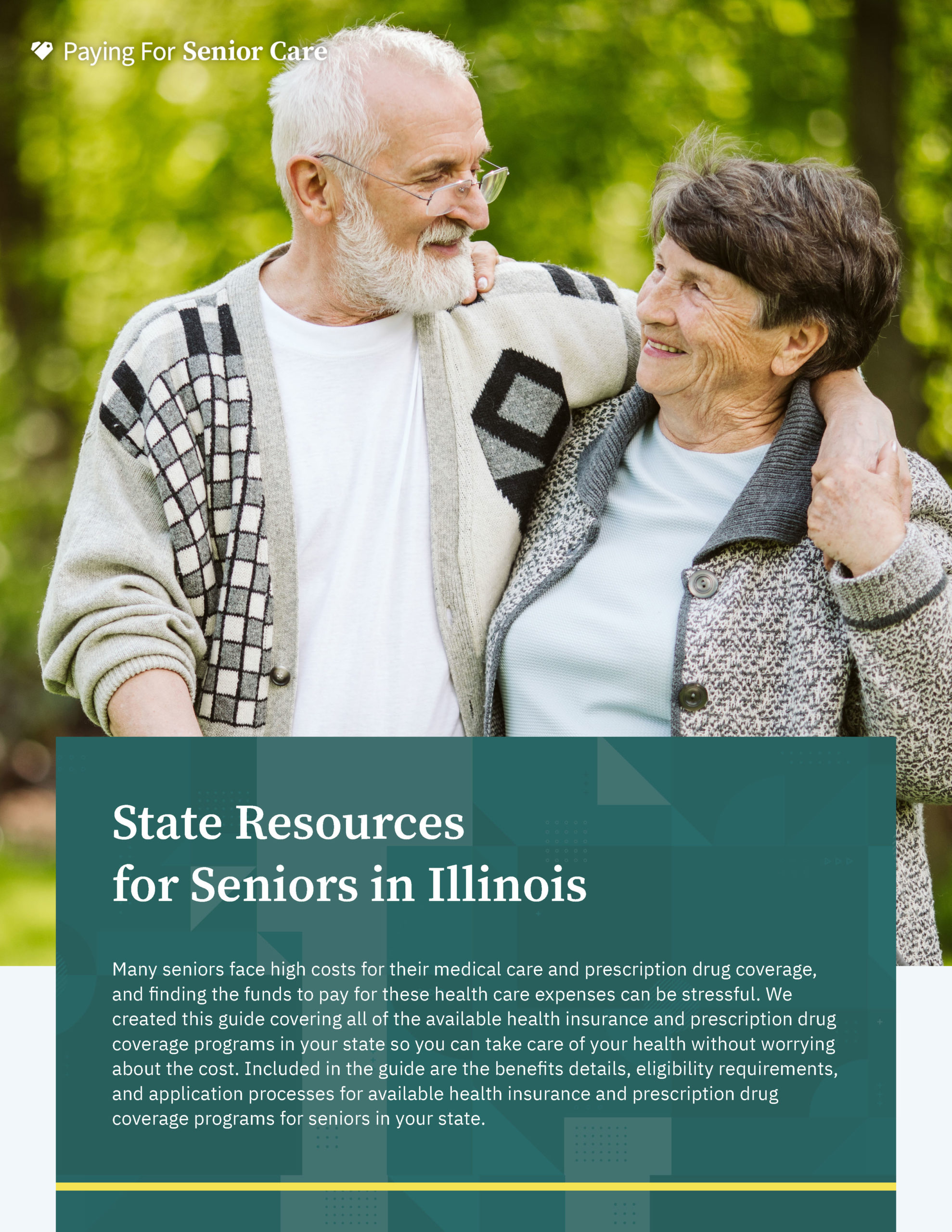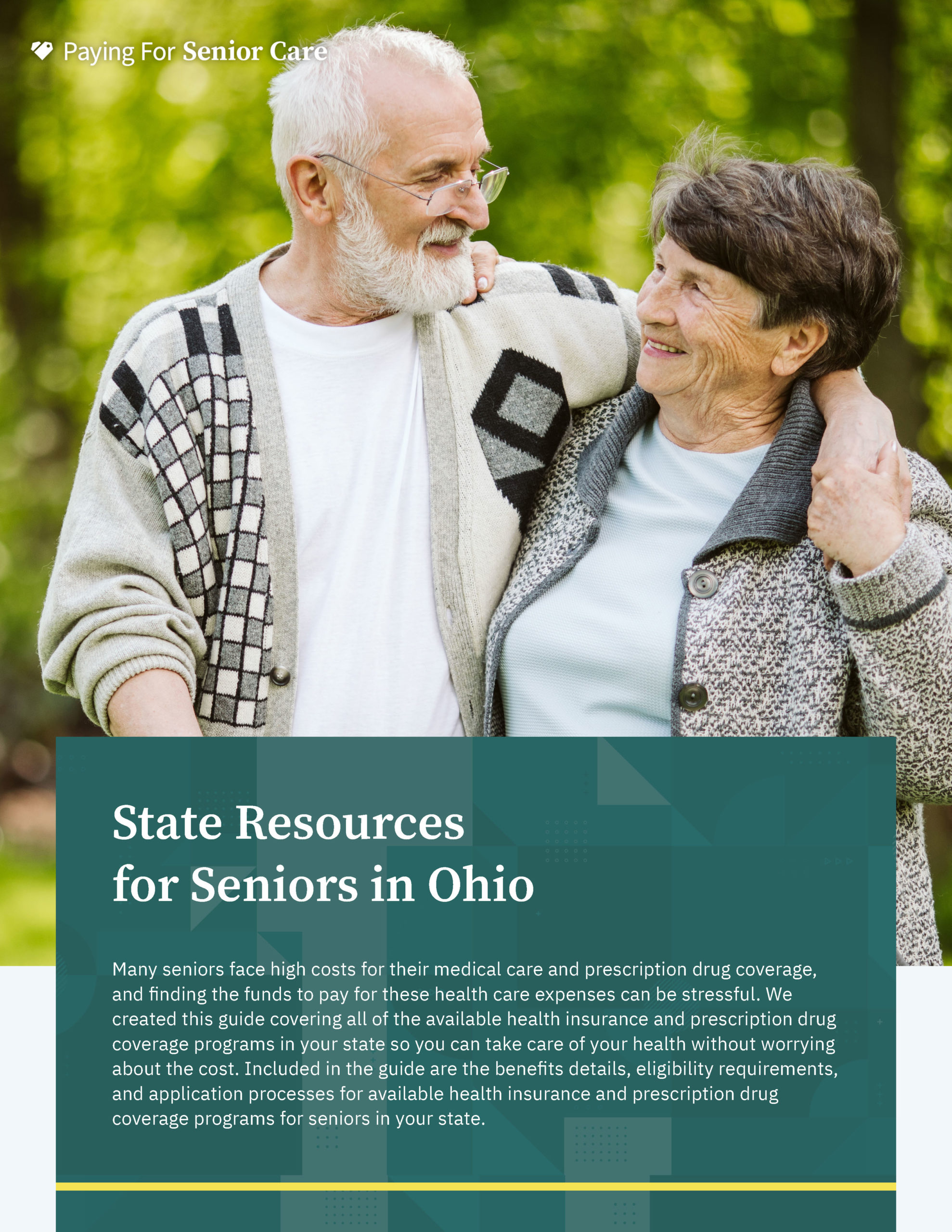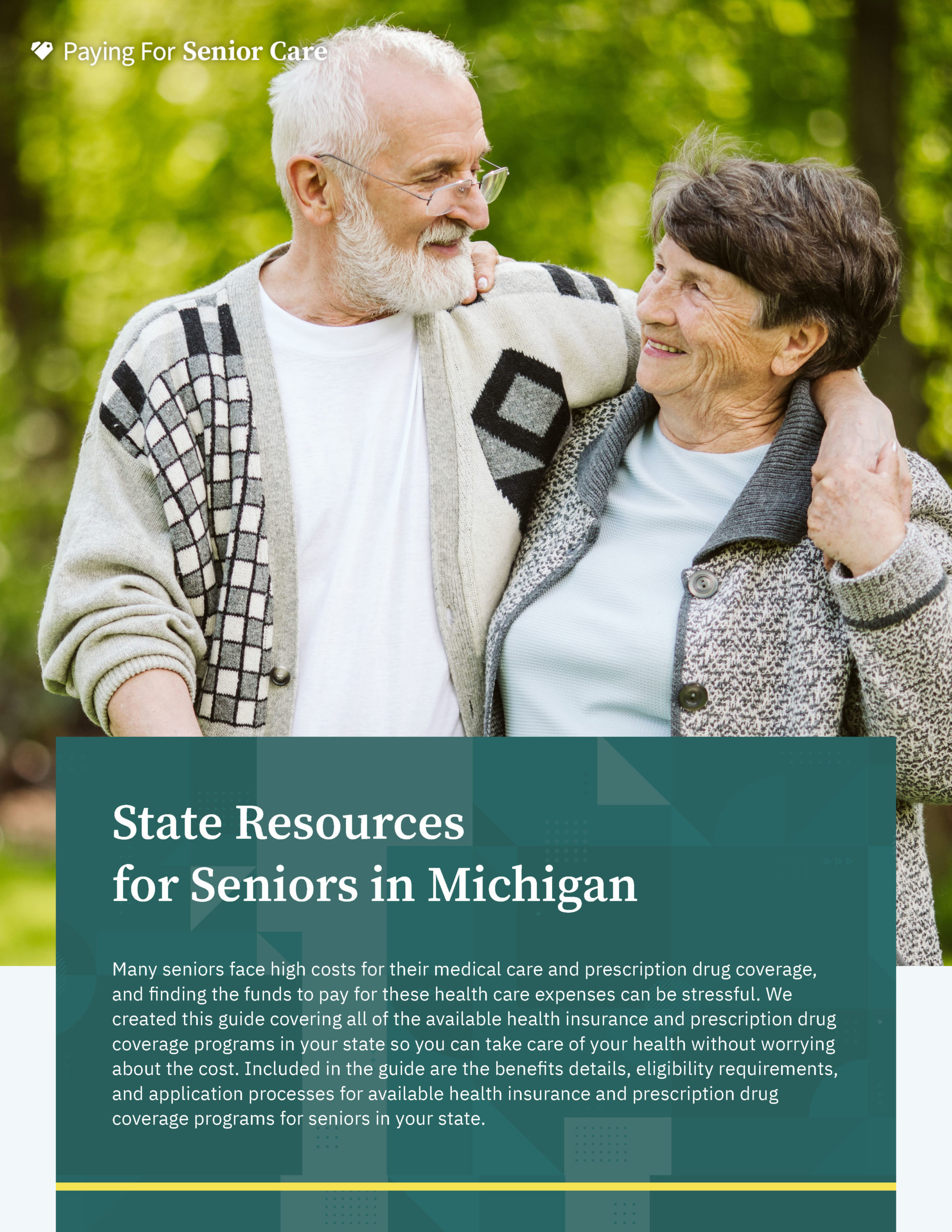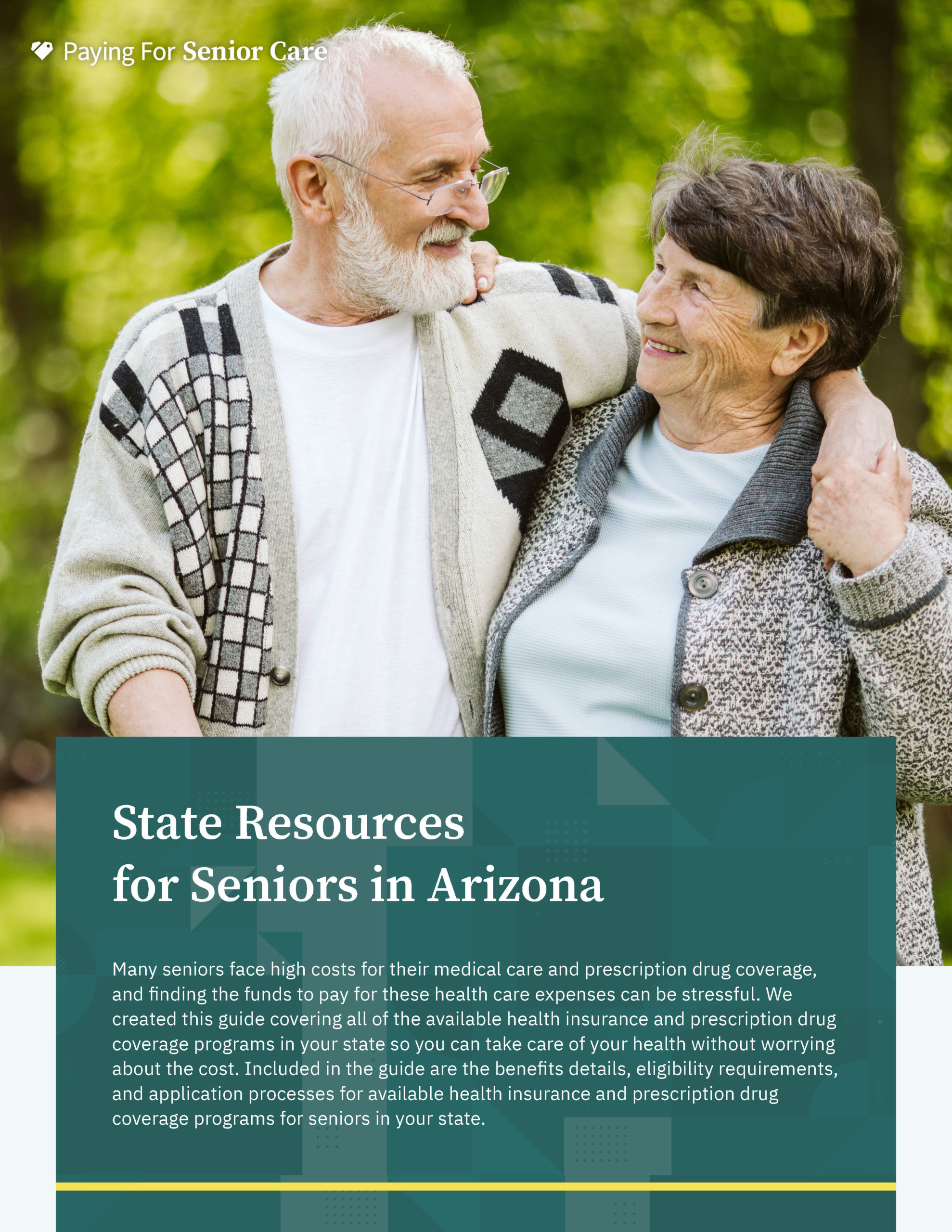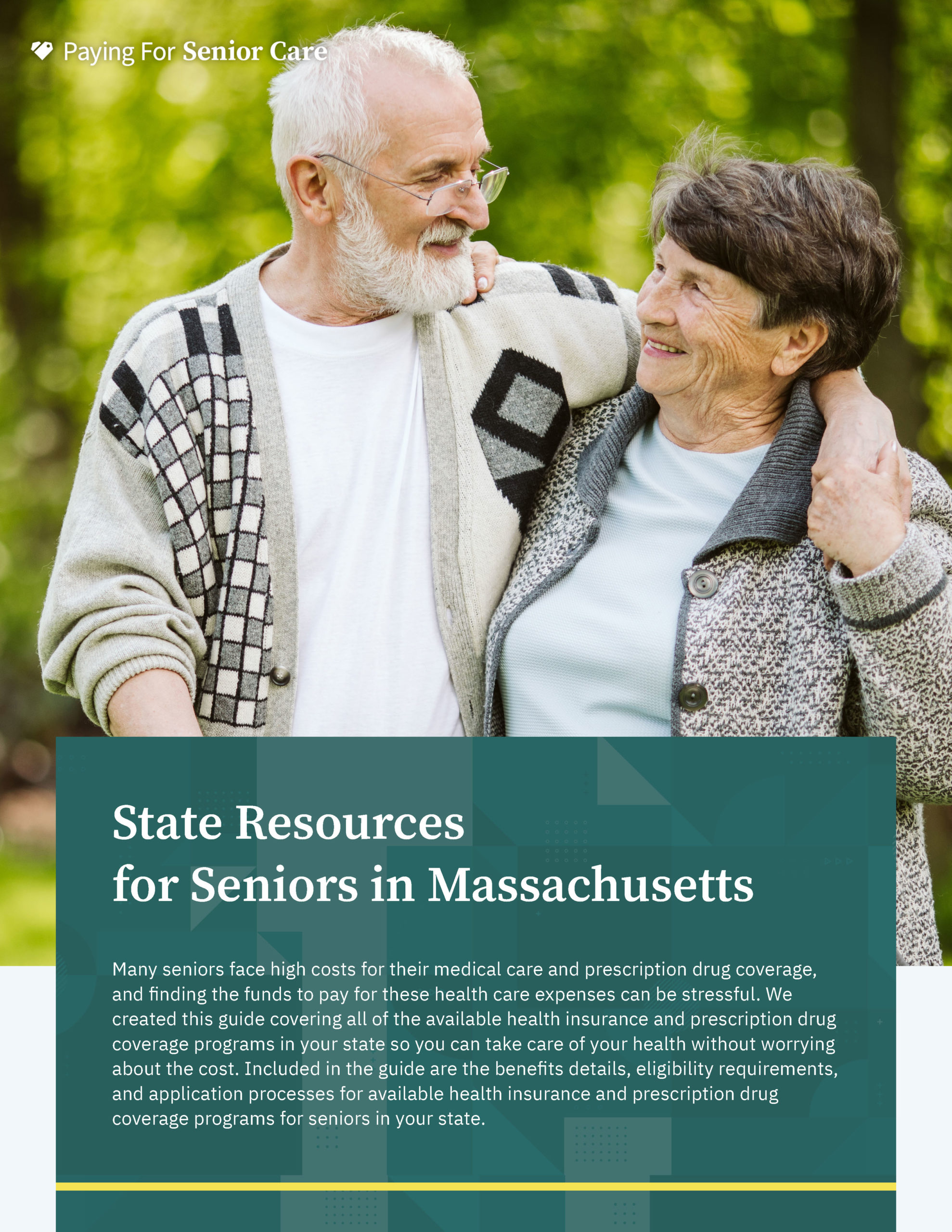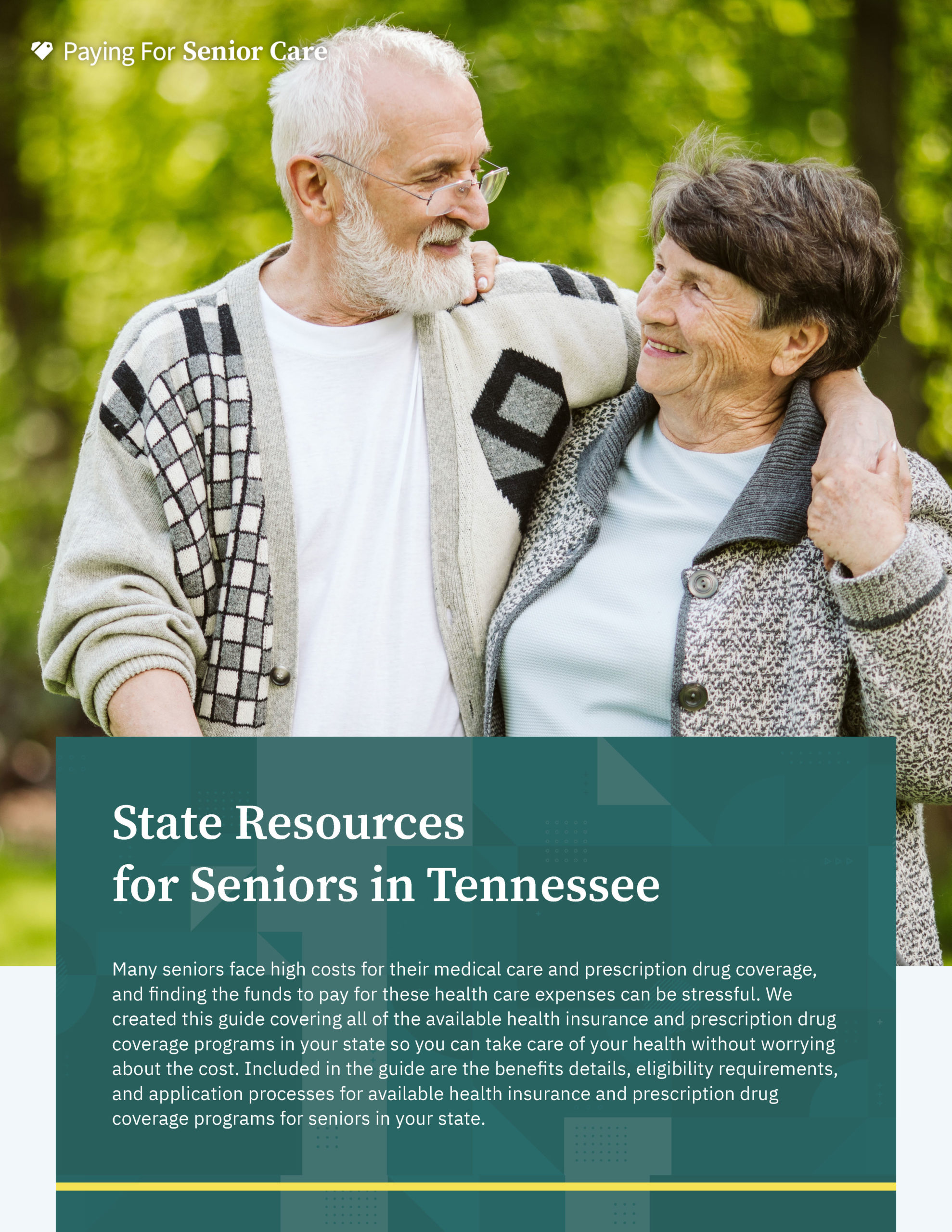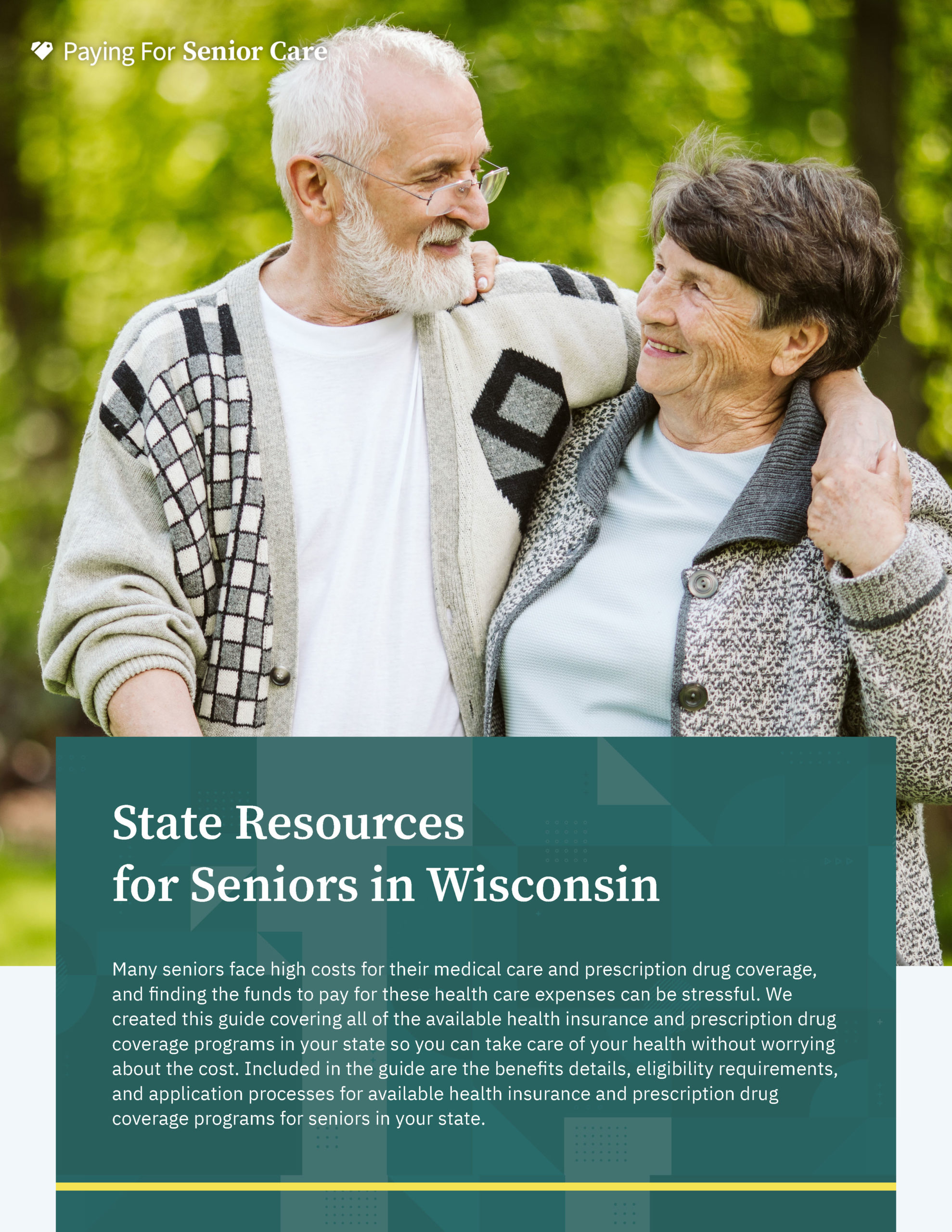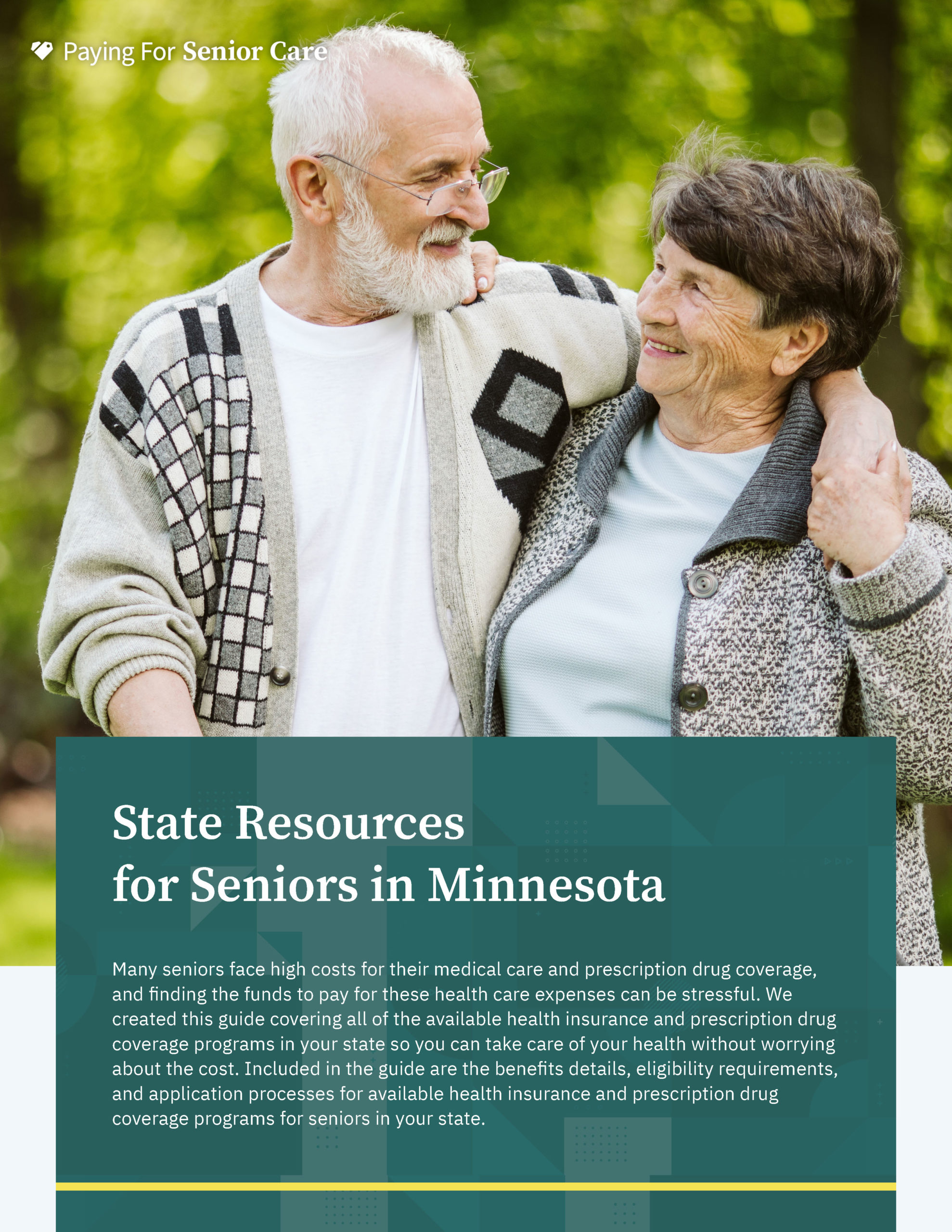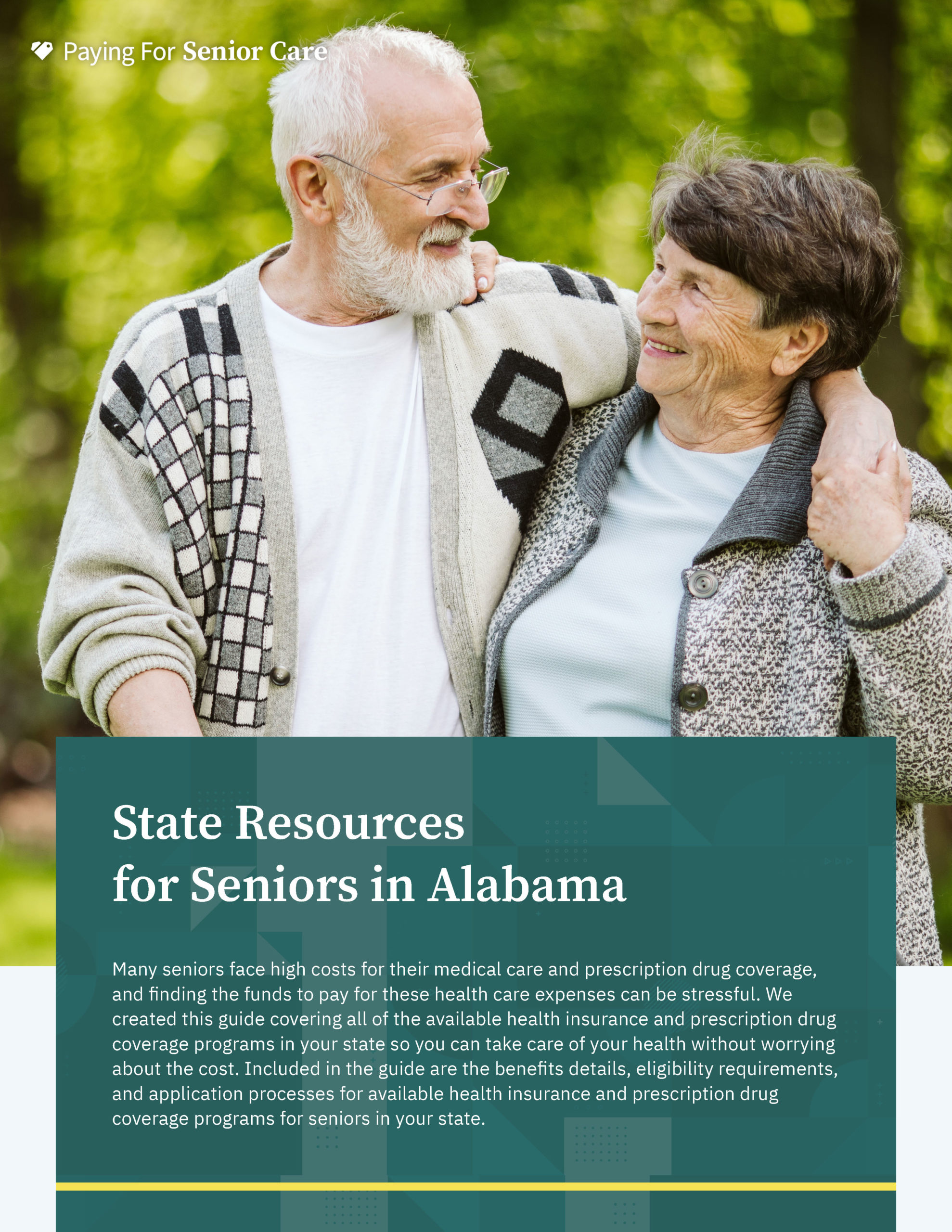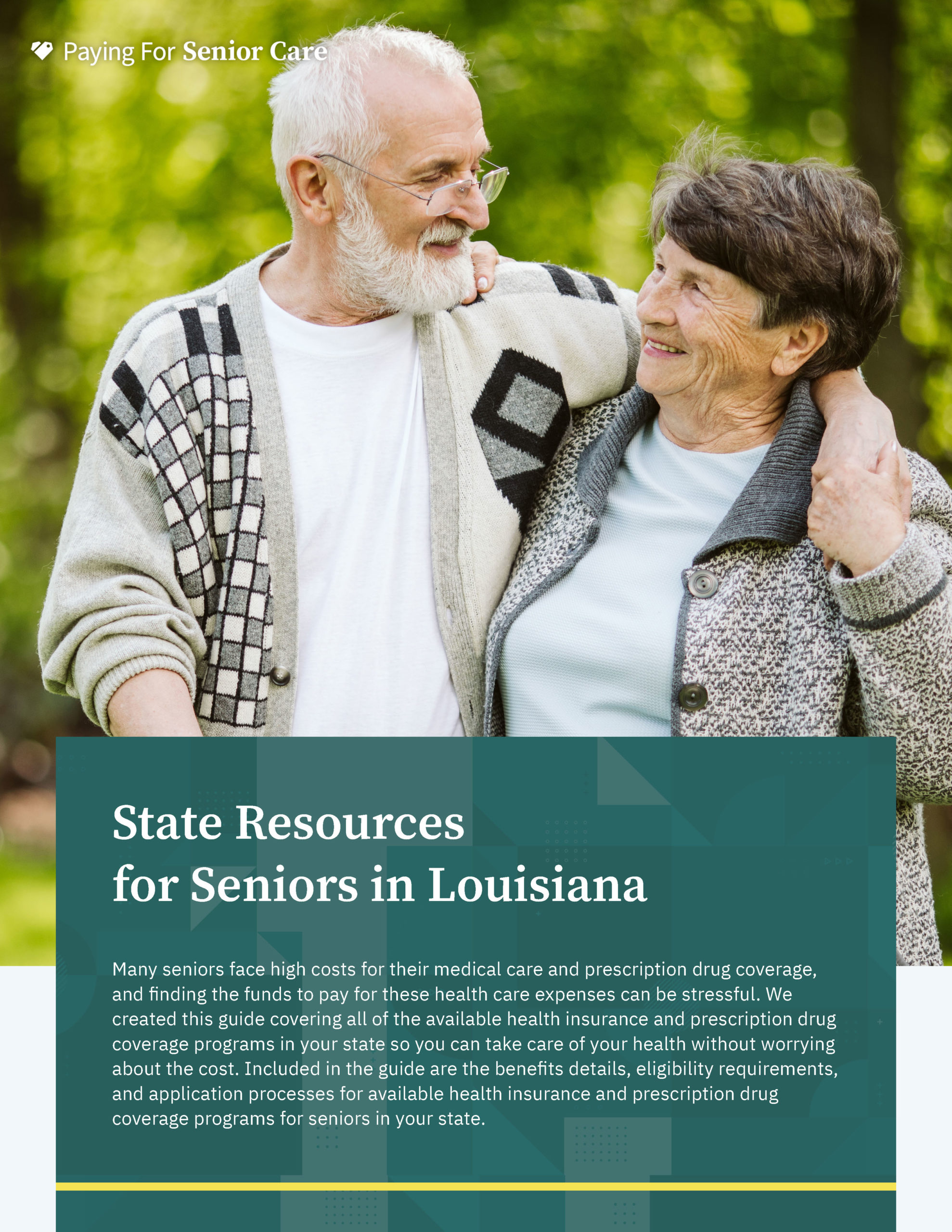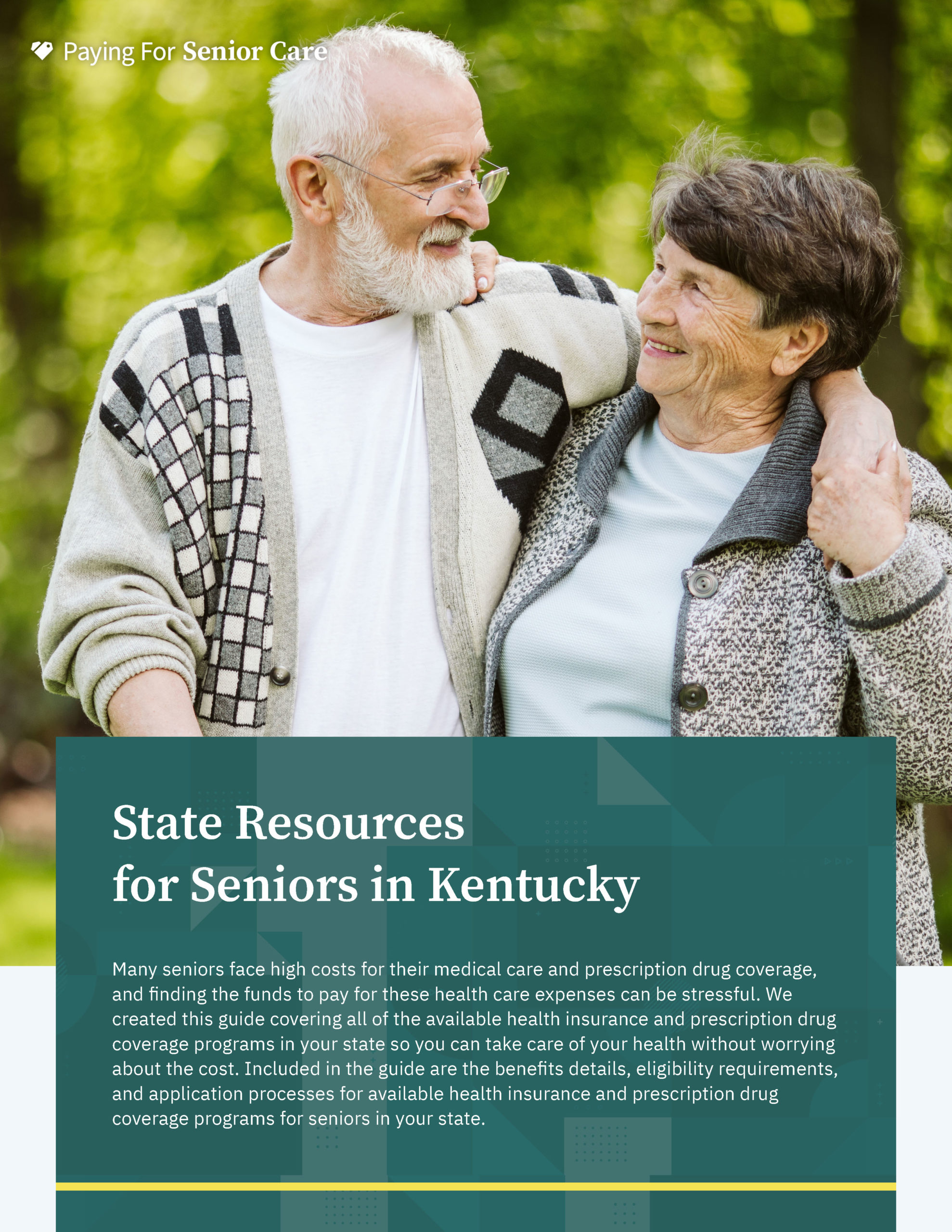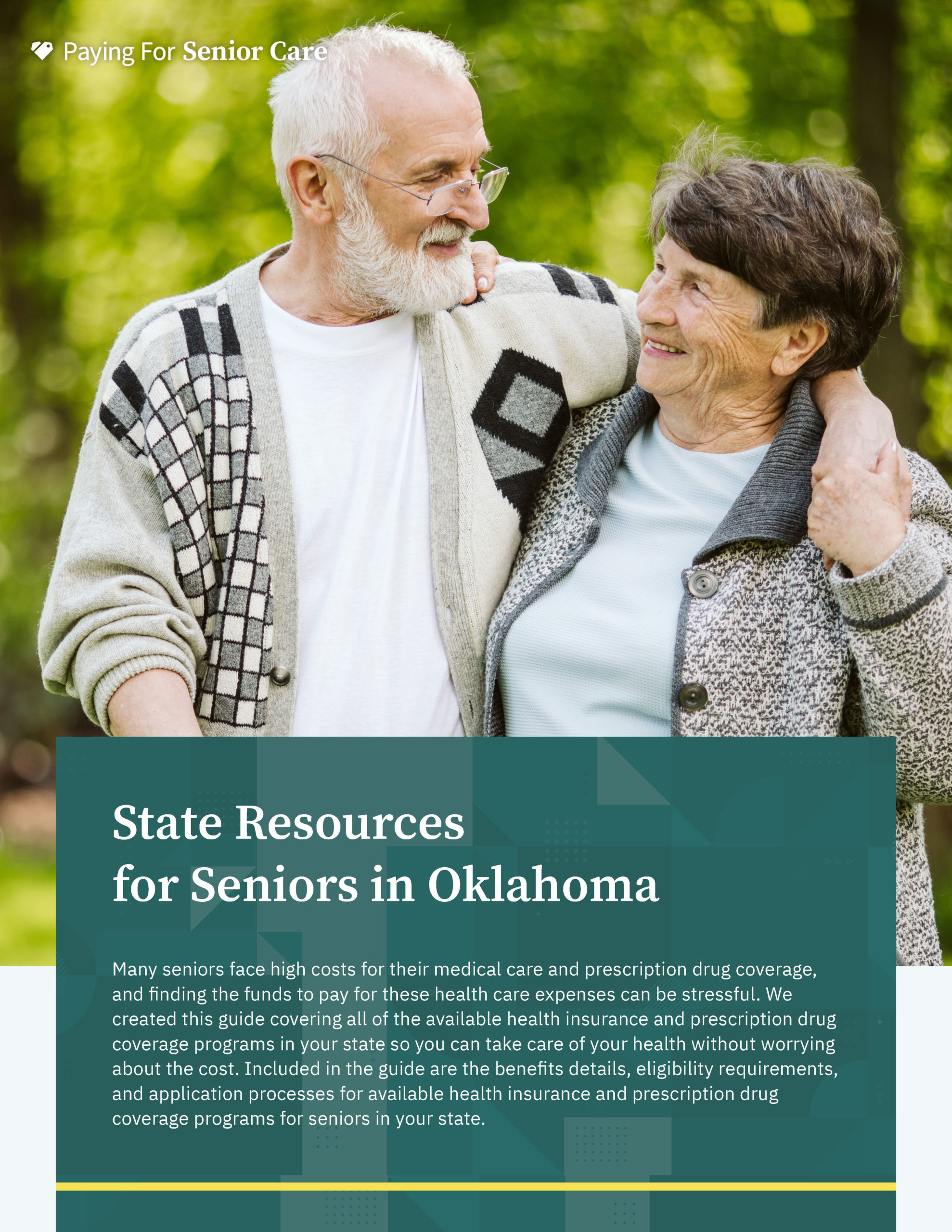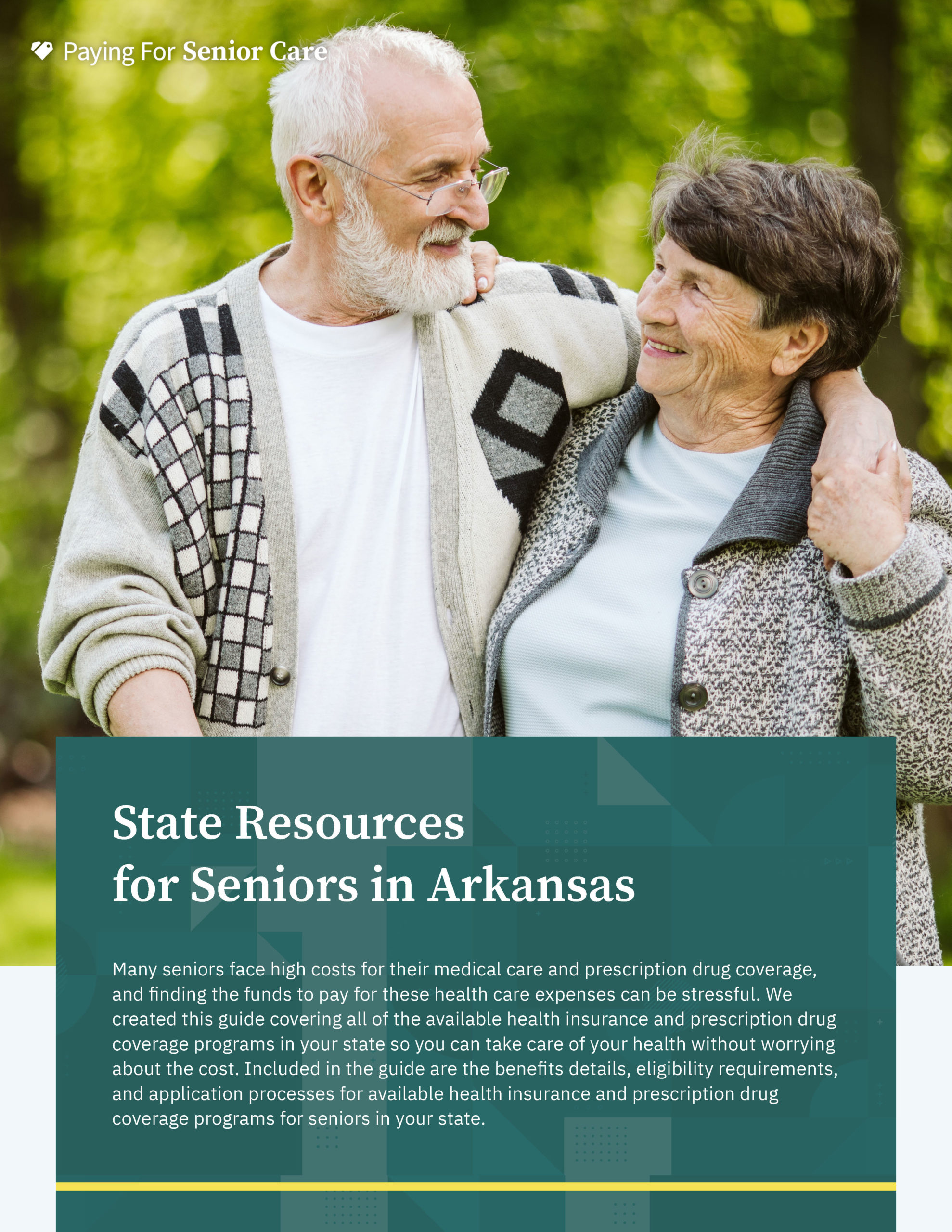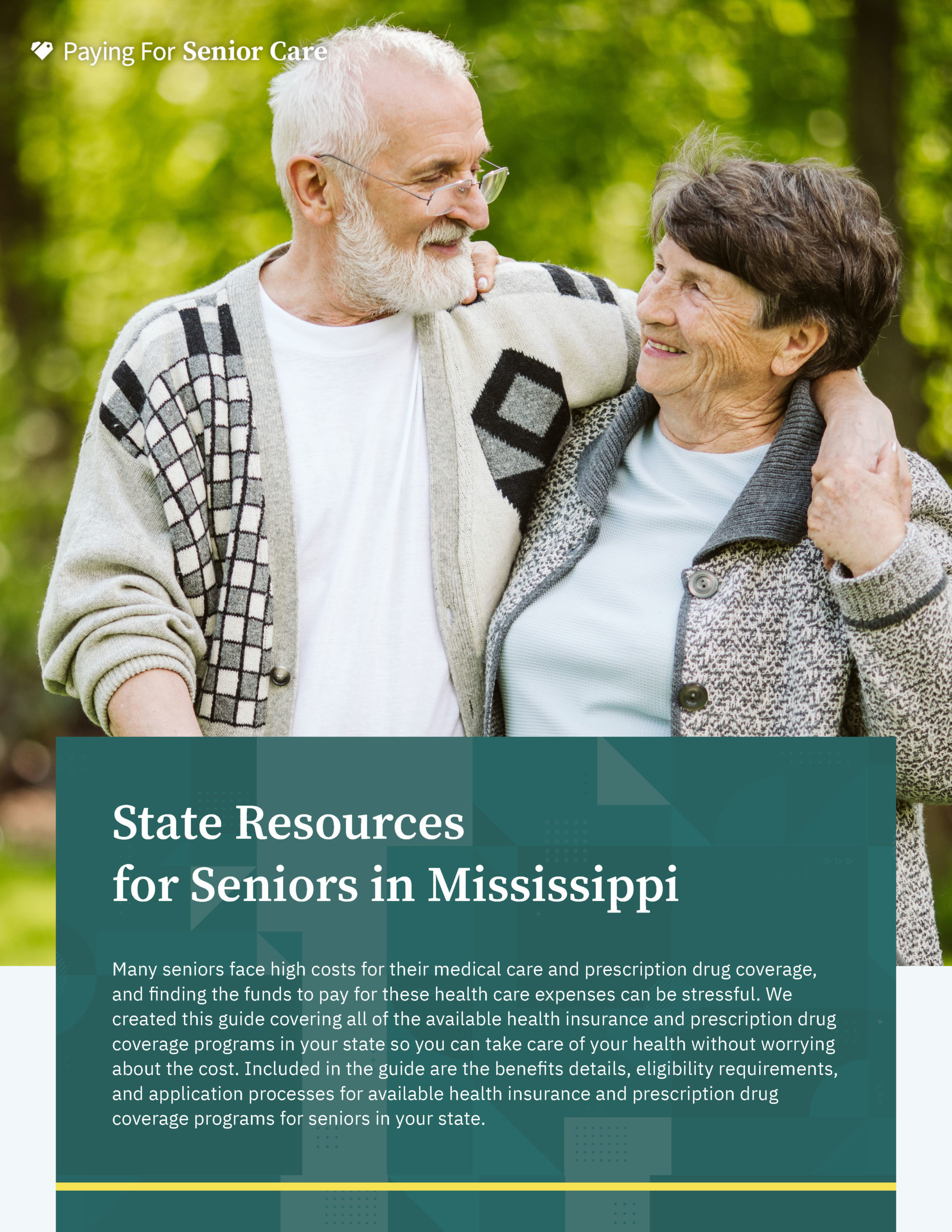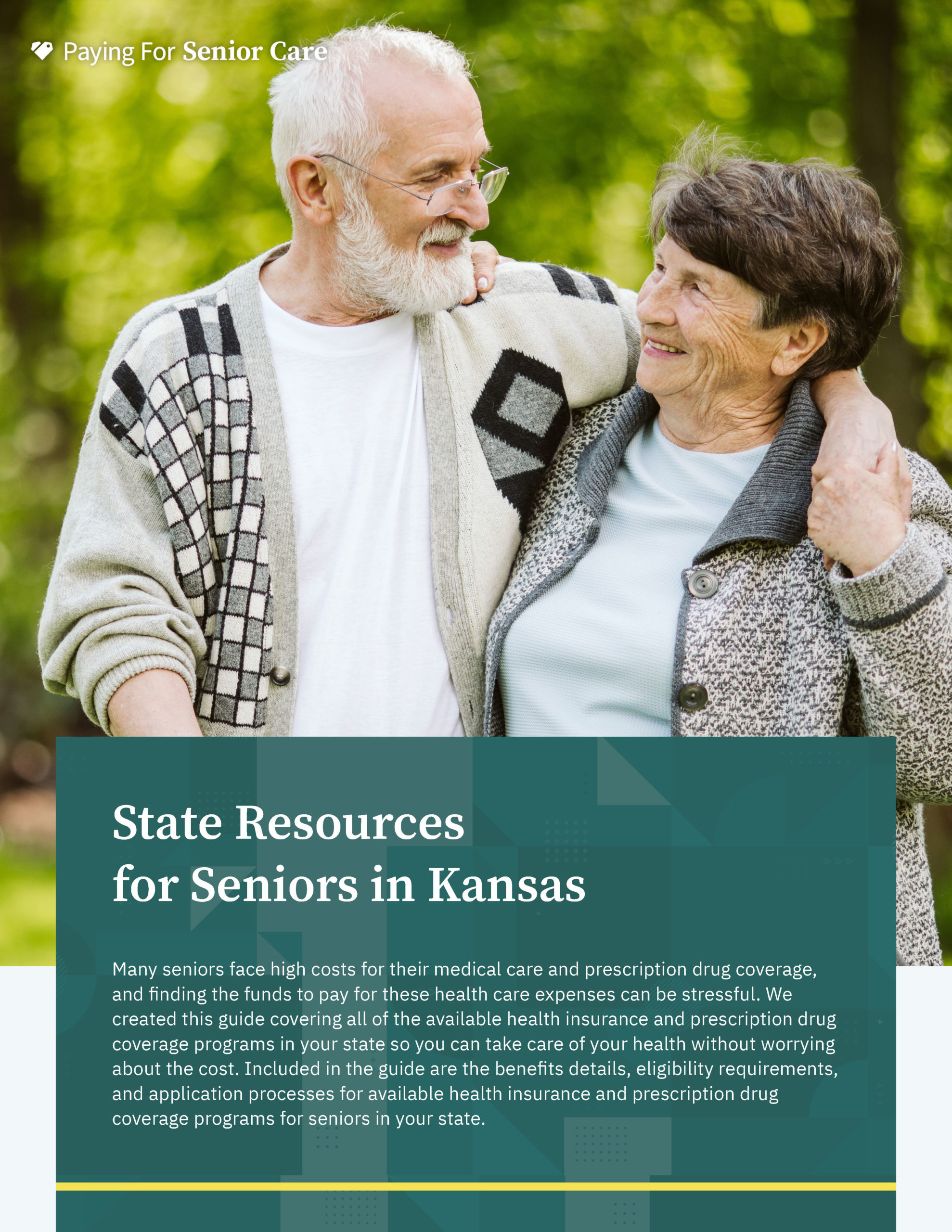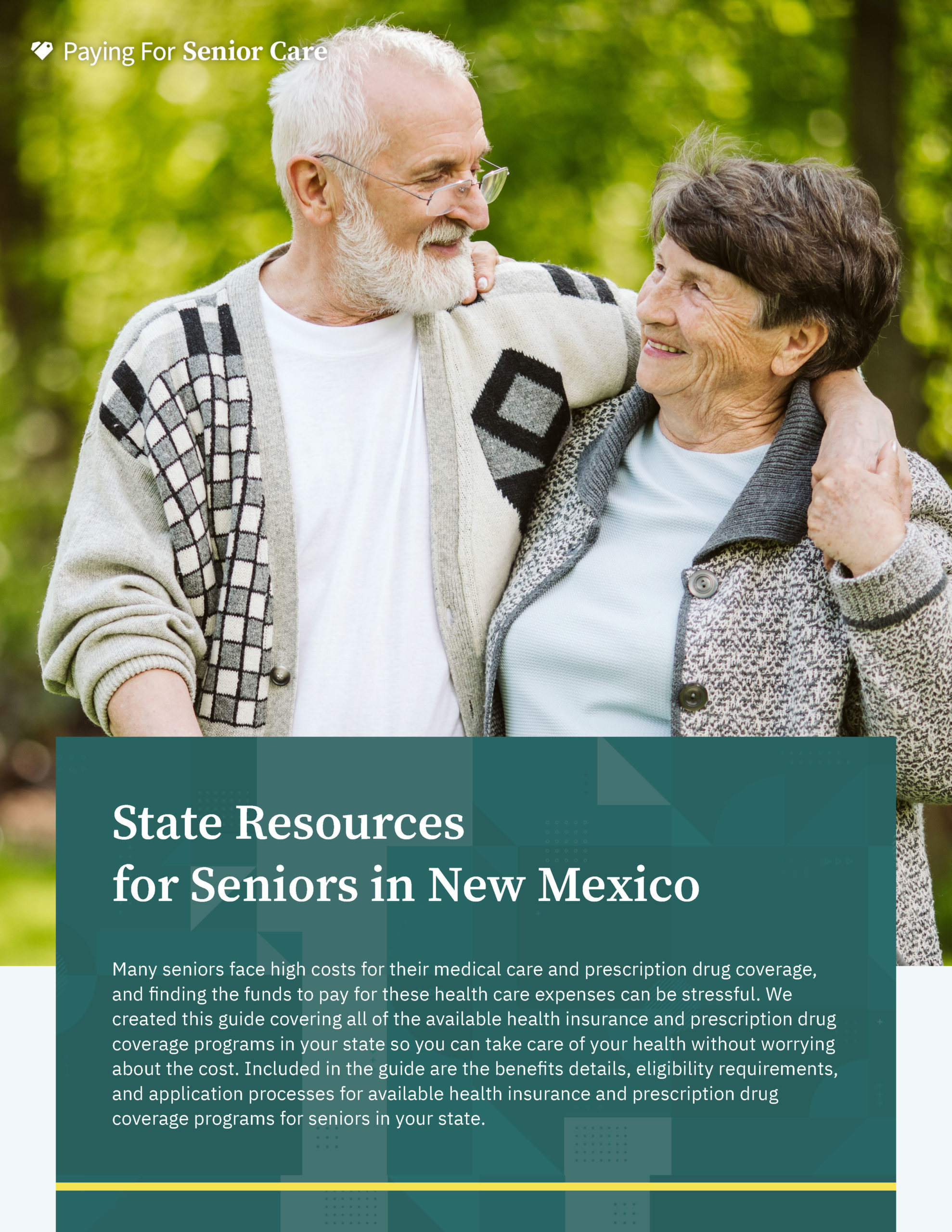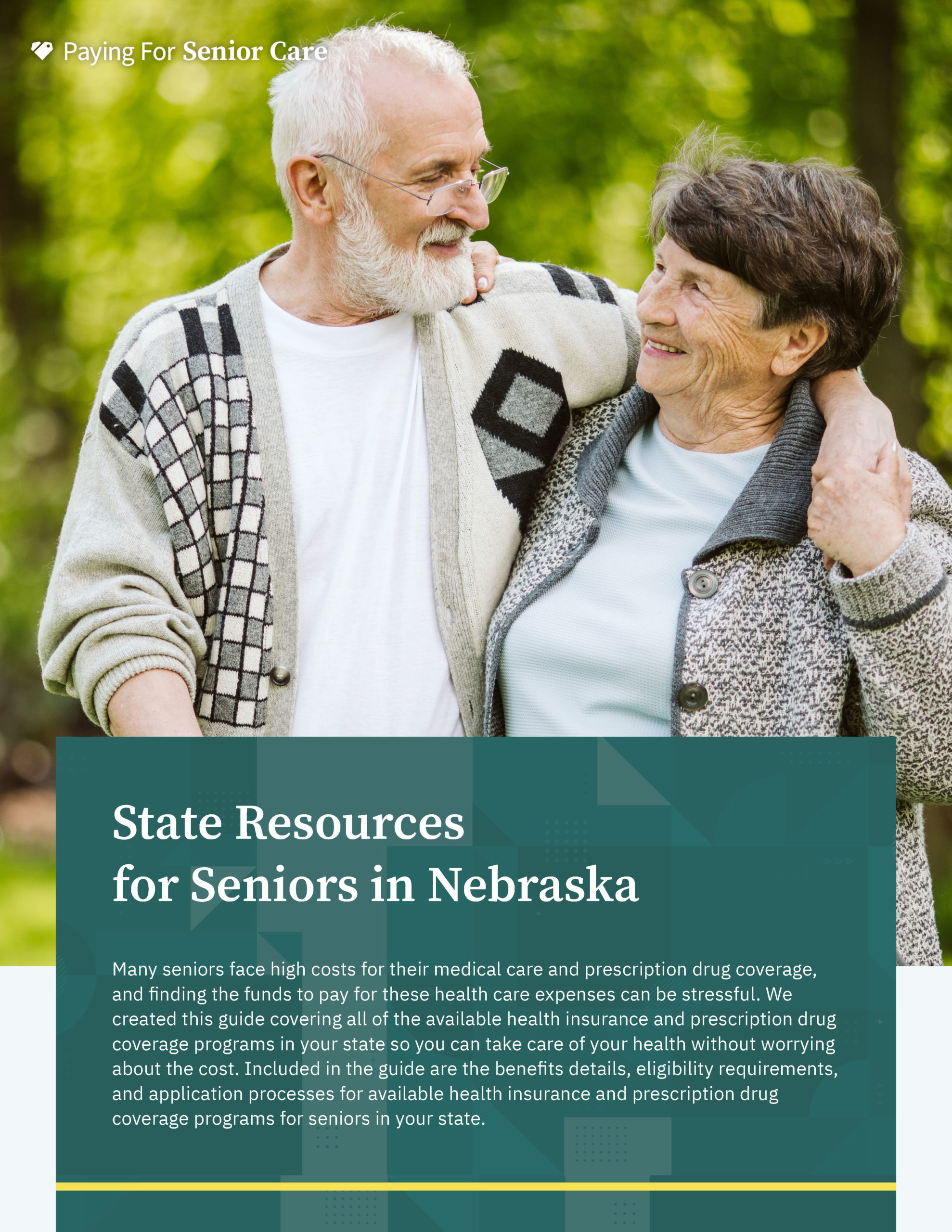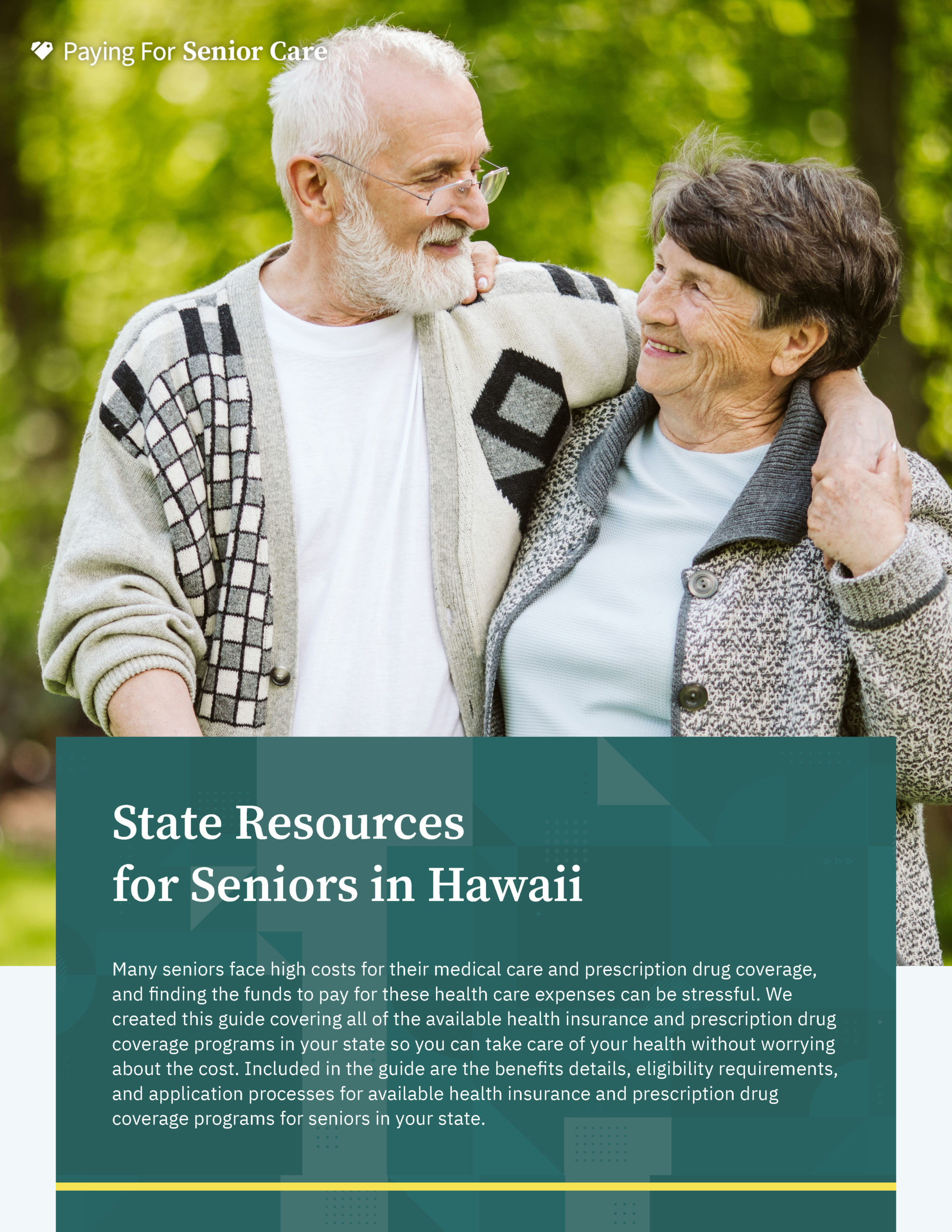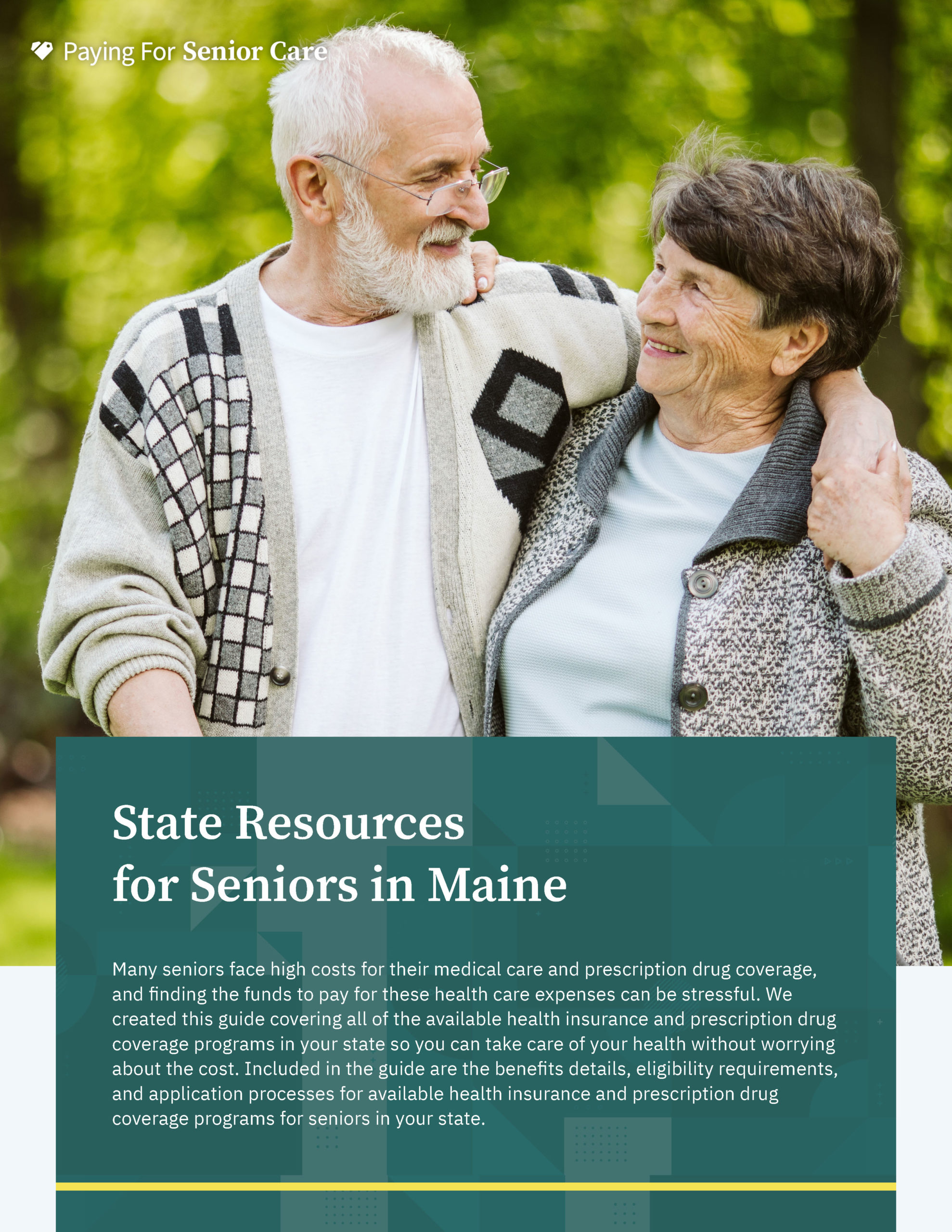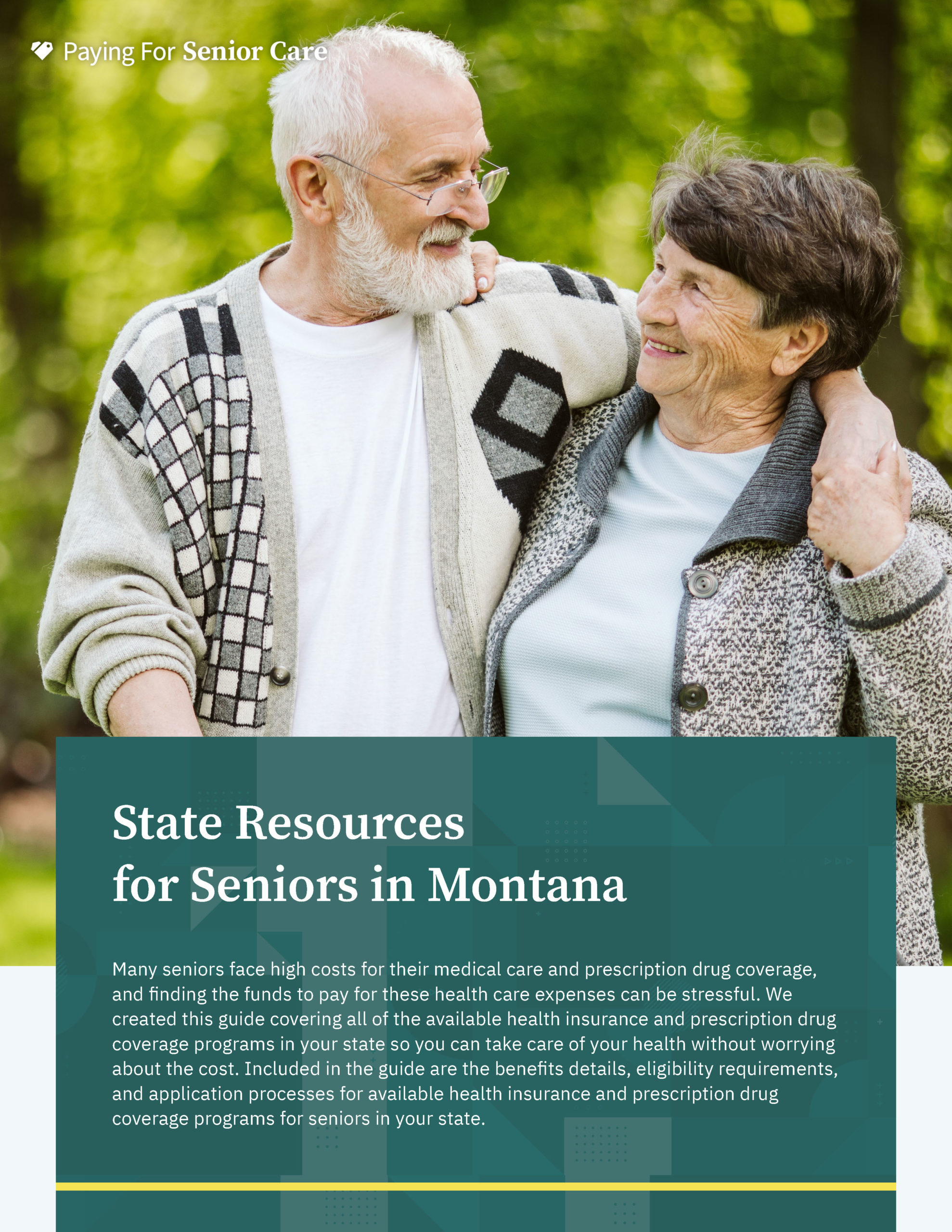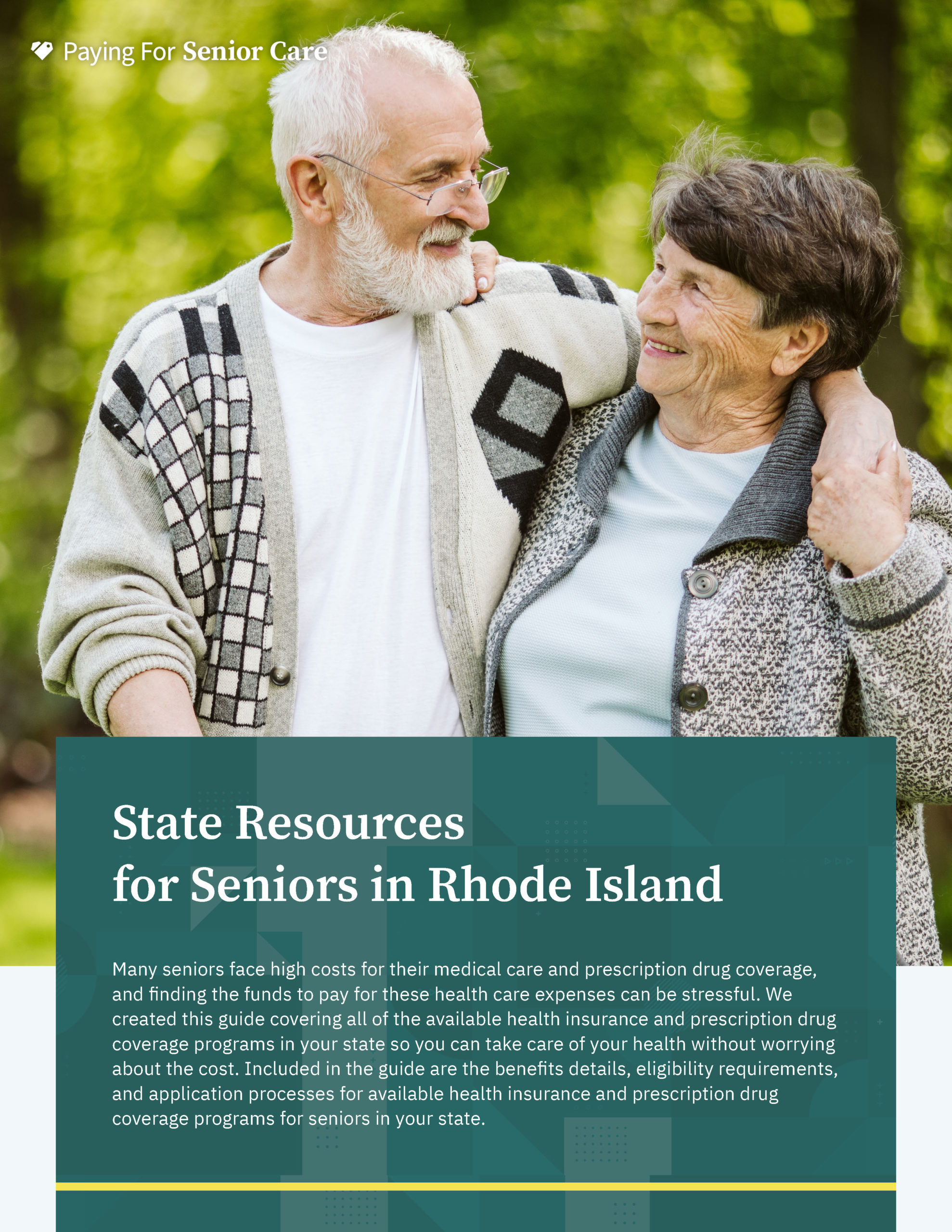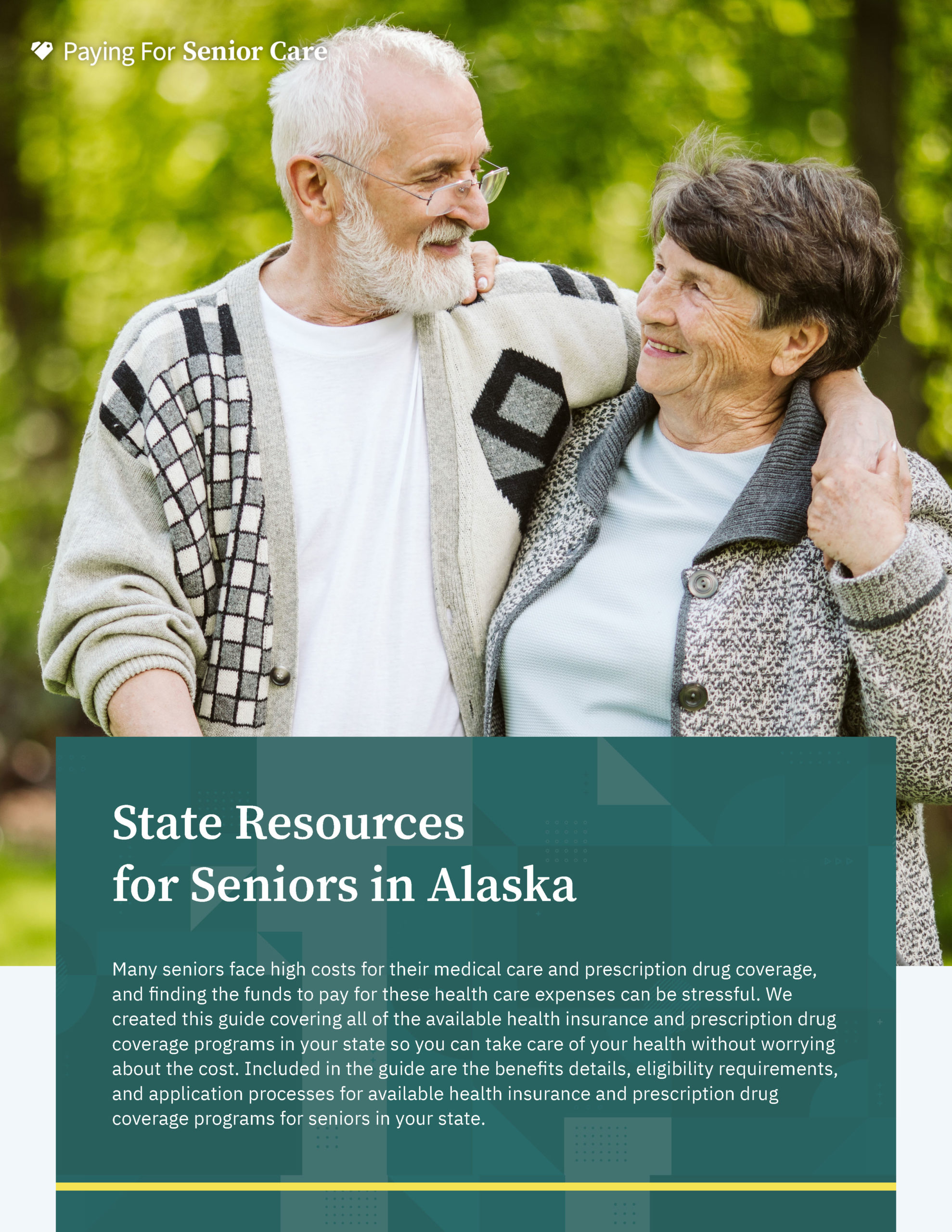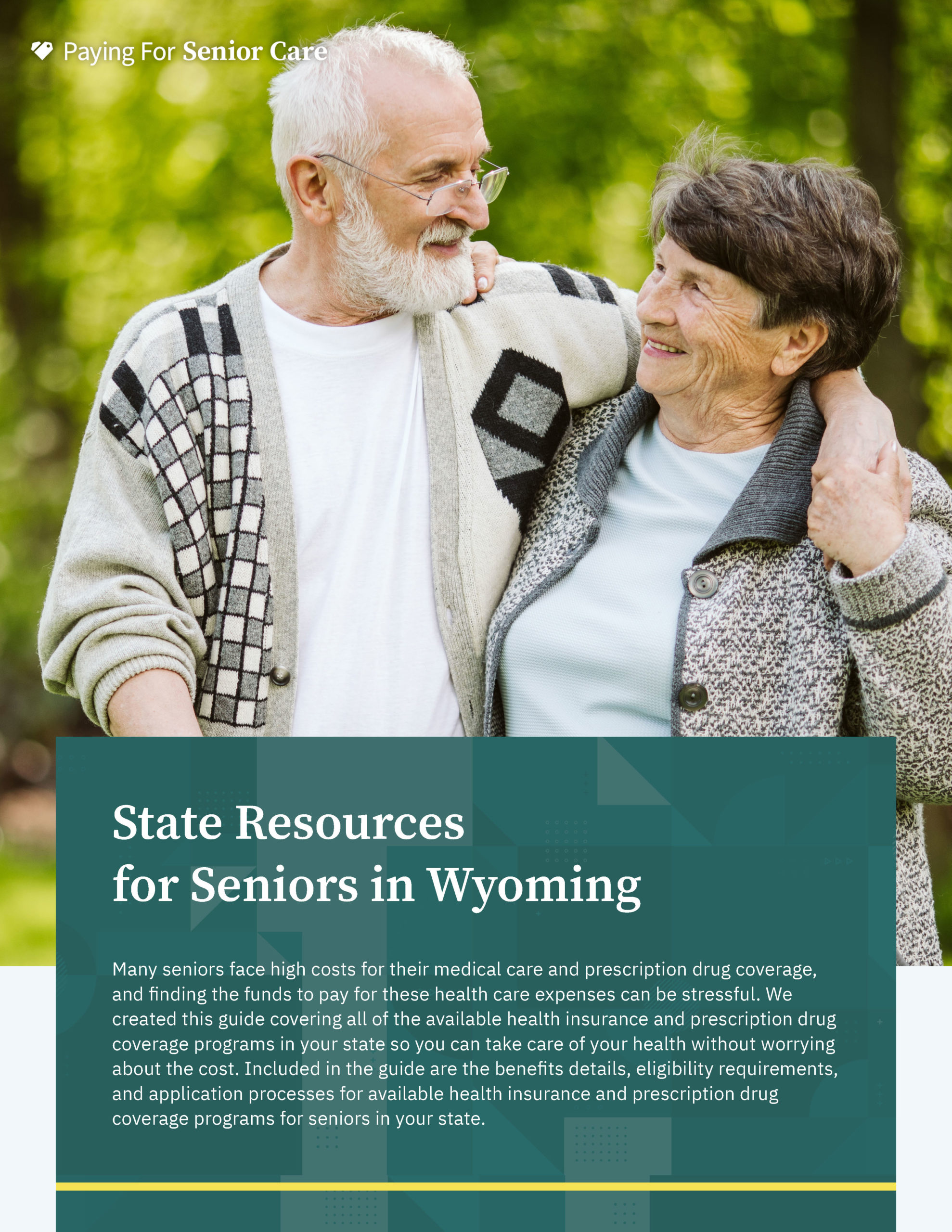Seniors with limited financial resources are often faced with the tough decision of spending what little money they have on prescription medications or using it to buy food or pay utility bills. The PAN Foundation, an organization that helps underinsured people access health care, reports that some seniors skip their medications or split their pills in half to make each prescription refill last longer.
Even seniors with more financial stability are concerned about the cost of prescriptions. With older adults spending an average of $600 per year on their prescription medications, many people are looking for a solution to this widespread problem.
Fortunately, several government agencies, nonprofit organizations and businesses offer programs to help seniors reduce their out-of-pocket expenses for prescription drugs. This guide highlights the prescription benefits available through Medicare and Medicaid, provides details about patient assistance programs operated by pharmaceutical companies and offers additional tips to help seniors save money.
Prescription Medications and Medicare: What You Need to Know
Original Medicare is a federal health insurance program that gives seniors access to hospital insurance (Part A) and medical insurance (Part B). When you become eligible for Medicare, you can sign up for Original Medicare coverage or enroll in Medicare Advantage. Also known as Medicare Part C, Medicare Advantage bundles the benefits of Original Medicare with prescription coverage and extra benefits. Both plans have pros and cons, some of which relate to prescription medications.
Prescription Coverage Under Original Medicare
Medicare Part A covers the prescription medications you receive as an inpatient, while Part B covers drugs administered in a doctor’s office and other outpatient settings. Some examples of medications covered under Part B include antibody infusions, injectable osteoporosis drugs and certain antigens. Original Medicare may also pay for certain drugs administered by a home health professional.
Unfortunately, Original Medicare doesn’t cover prescription medications purchased at a pharmacy. If you want coverage for these drugs, you’ll need to buy a Medicare Part D plan. Medicare Part D is a supplemental insurance plan that pays for prescription drugs.
Unlike Original Medicare, Part D coverage is provided by private insurance companies. Depending on the plan you select, you may need to pay a monthly premium, increasing your out-of-pocket costs. You may also need to pay an annual deductible before the plan starts covering any of your medications.
How much you spend each year depends on how many medications you take and whether you enter the coverage gap, also known as the Medicare “donut hole.” The gap begins once you and your Part D provider have paid a certain amount for covered medications. As of 2022, that amount is $4,430. When you’re in the gap, you pay no more than 25% of the cost for each prescription drug until your out-of-pocket spending reaches the limit ($7,050 in 2022).
Prescription Coverage Under Medicare Advantage
Medicare Advantage offers four main types of plans: health maintenance organizations (HMOs), special needs plans (SNPs), preferred provider organizations (PPOs) and private fee-for-service (PFFS) plans. Medicare requires SNPs to cover prescriptions, so all SNPs include prescription drug benefits. Most HMOs and PPOs also pay for prescription medications. If you have a PFFS plan, you may have prescription coverage, but it depends on the terms of the plan.
If your Medicare Advantage plan includes prescription coverage, you’re not allowed to sign up for Medicare Part D since you don’t need the supplemental benefits. However, if you have a PFFS plan that doesn’t cover prescriptions, you’re allowed to enroll in Medicare Part D to ensure you have the coverage you need.
Your out-of-pocket prescription costs depend on the terms of your Medicare Advantage plan. Because these plans are offered by multiple insurance companies, your plan may have different copay and co-insurance requirements than other plans available in your area.
Medicare Eligibility
You may be eligible for Medicare if you’re at least 65 years old, if you’ve been receiving Social Security disability benefits for at least 24 months or if you have end-stage kidney disease. If you have amyotrophic lateral sclerosis — known as ALS or Lou Gehrig’s disease — you don’t have to receive 24 disability payments before you become eligible for Medicare. Your eligibility begins as soon as you receive the first disability payment. Medicare.gov has a tool to help you estimate when you’ll be eligible for Medicare coverage.
To qualify for Medicare Advantage, you must have Medicare Part A and Part B. You must also live in your selected plan’s service area. Because Medicare Advantage plans are offered by multiple insurance companies instead of a single government agency, plan availability depends on your location.
For Original Medicare, Medicare Advantage and Medicare Part D, you must also be a U.S. citizen or a lawful permanent resident of the United States.
Medicare Supplement Insurance
Before Medicare Part D was introduced, many Medicare beneficiaries purchased Medigap coverage to help them make their health care costs more manageable. Some Medigap plans covered prescription medications. Now that Medicare enrollees have the option of purchasing Part D coverage, new Medigap plans aren’t allowed to include prescription benefits. Unless you have a grandfathered Medigap plan that was purchased prior to 2006, you won’t be able to use Medigap to pay for prescription drugs. However, you can use it to cover deductibles, copays and co-insurance.
If you happen to have an older Medigap plan with prescription coverage, your out-of-pocket costs will depend on which plan you have.
Most people qualify for premium-free Part A, but there’s a monthly premium for Part B coverage and a separate premium for your Medicare Part D plan. These costs add up quickly, making it difficult for some seniors to afford their prescriptions. Seniors with limited financial means may be able to use Medicare Part D Extra Help to cover their Part D premiums and other out-of-pocket costs.
Out-of-Pocket Costs
Medicare Part D Extra Help has several eligibility categories, so not everyone who qualifies has the same out-of-pocket costs. Each category also has an out-of-pocket threshold, which is the maximum amount of money you have to pay before the copay for each drug decreases or goes away.
Consult the table below to find out how much you have to pay for prescriptions under each Extra Help category.
|
Category
|
Copay Before Threshold
|
Copay After Threshold
|
Deductible*
|
|
– Beneficiaries who are eligible for both Medicare and Medicaid (dual-eligible) and living in an institutional setting
– Beneficiaries who receive Home and Community-Based Services
|
$0
|
$0
|
$0
|
|
Individuals who qualify for Medicare and Medicaid and have incomes that don’t exceed 100% of the Federal Poverty Level (FPL)
|
– Generic: $1.35
– Brand: $4.00
|
$0
|
$0
|
|
– Dual-eligible beneficiaries with incomes above 100% of the FPL
– Medicare Savings Program participants
– SSI participants who don’t have Medicaid coverage
– Beneficiaries with incomes below 135% of the FPL and assets valued at no more than $9,000 for an individual or $15,600 for a married couple
|
– Generic: $3.95
– Brand: $9.85
|
$0
|
$0
|
|
Beneficiaries with incomes below 150% of the FPL and assets valued at no more than $9,900 to $15,600 for an individual or $15,600 to $30,950 for a married couple
|
15%
|
– Generic: $3.95
– Brand: $9.85
|
$99
|
* Income and asset limits are current as of May 2022.
Eligibility
In addition to the financial requirements outlined above, Extra Help applicants must be enrolled in Medicare Part D. Some Medicare beneficiaries qualify for Extra Help without having to apply for it, including Supplemental Security Income (SSI) and Medicaid participants. You also qualify for automatic enrollment if you belong to a Medicare Savings Program, which helps pay Medicare premiums, copays, co-insurance and deductibles.
If you don’t qualify for Extra Help based on your participation in SSI, Medicaid or a Medicare Savings Program, you may qualify if your annual income is below $20,385 and the value of your assets doesn’t exceed $15,510. The limits increase to $27,465 per year in income and $30,950 in assets if you’re married.
How to Apply for Extra Help
If you don’t qualify for automatic enrollment, you can apply for Medicare Part D Extra Help using one of the following methods:
- Fill out the online application at SSA.gov.
- Visit your local Social Security office. Use the field office finder to determine which office is closest to your neighborhood.
- Call (800) 772-1213 to speak with someone at the Social Security Administration.
What to Do if Your Application Is Denied
If your application is denied, and you believe that you meet the Medicare Part D Extra Help eligibility requirements, download the appeal form (SSA-1021) from the Social Security website or request a copy by calling (800) 772-1213. Return the completed appeal form to the following address:
Social Security Administration
Wilkes-Barre Data Operations Center
P.O. Box 1030
Wilkes-Barre, PA 18767-1030
Medicaid Prescription Coverage Options
Although a federal agency — the Centers for Medicare & Medicaid Services — sets the rules for Medicaid, each state administers its own Medicaid program. As a result, where you live affects how much you pay for prescription medications. In some states, Medicaid partners with managed care organizations (MCOs) to reduce program costs. If you live in one of these states, your out-of-pocket costs for prescriptions will also depend on which MCO you join.
In some states, Medicaid participants pay the same copay for every drug, regardless of the drug’s cost. Other states have copay tiers, with more expensive medications requiring higher copays. For example, Louisiana Medicaid enrollees have copays ranging from $0.50 to $3.00, depending on the cost of each prescription. As of 2019, Medicaid copays ranged from $0 to $4 per medication in most states. Several states, including Arizona, Hawaii and Nevada, have no prescription copays for Medicaid participants.
Medicaid Eligibility Requirements
Medicaid has some eligibility requirements that apply in every state. For example, you must be a U.S. citizen or lawful permanent resident. Depending on your circumstances, you may qualify if you’re another type of qualified non-citizen. You must also live in the state where you apply for Medicaid. Every state has its own financial eligibility criteria for Medicaid applicants, so financial requirements vary from state to state.
Alabama residents have an income limit of $861 per month for traditional Medicaid, while Alaska residents have an income limit of $1,561 per month. Connecticut’s income limits vary based on region — $1,052 per month in the southwestern part of the state and $941 per month in northern, eastern and western Connecticut. Most states also have resource limits for Medicaid applicants. Countable resources include checking accounts, savings accounts, cash, stocks and certificates of deposit.
How to Apply for Medicaid
To apply for coverage, contact the Medicaid agency in your state.
Financial Assistance From Pharmaceutical Companies
Many pharmaceutical manufacturers have patient assistance programs (PAPs). These programs help people access expensive prescription drugs that aren’t covered by insurance or have such high copays that many people can’t afford to get them, even with insurance coverage. Each PAP sets its own eligibility requirements, so there may be income limits or restrictions on how long you can stay in the program.
If you have Medicare Part D, you may be able to use a PAP to obtain medications that aren’t covered by Medicare. Otherwise, PAP participation is typically limited to seniors who don’t have comprehensive prescription coverage.
As of May 2022, there are more than 400 PAPs available to individuals who need help paying for their prescriptions. The table below contains information about some of the most popular programs.
|
Program
|
Examples of Covered Medications*
|
Eligibility Requirements
|
Contact Information
|
How to Apply
|
|
Abbott Nutrition Patient Assistance Program
|
– Glucerna
– Jevity
– Nepro
– Propimex
|
– Reside in the United States
– Must require 100% of your caloric needs from one of the covered nutrition products
|
(866) 801-5657
|
Download the application from the Abbott website and fax it to (866) 734-7353. You can also mail the completed application to:
Abbott Nutrition Patient Assistance Program
P.O. Box 4280
Gaithersburg, MD 20885-4280
|
|
Bristol-Myers Squibb Patient Assistance Foundation
|
– Opdivo
– Orencia
– Eliquis
|
– Reside in the United States, the U.S. Virgin Islands or Puerto Rico
– Income not exceeding $40,770 for a single person or $54,930 for a married couple (for Orencia and Eliquis); in need of medication to treat cancer, ulcerative colitis, multiple sclerosis or kidney transplant if you exceed the income limit
– Must have your physician fill out part of the application
|
(800) 736-0003
|
– Download an application or call (800) 736-0003 to request one. After you fill it out, send it to the address or fax number listed on the form.
– Your application may be approved sooner if you provide copies of recent pay stubs, pension statements or 1099 forms to help BMS verify your income.
– If you’re a Medicare beneficiary, you must submit documents proving that you’ve spent 3% of your income on out-of-pocket prescription expenses for the current tax year.
|
|
BI Cares Patient Assistance Program
|
– Aptivus
– Jardiance
– Pradaxa
– Synjardy
– Tradjenta
|
– Must be uninsured or underinsured
– Reside in the United States or one of its territories
– Must meet household income guidelines
– Lack access to other sources of coverage for your BI medication
|
(800) 556-8317
|
Download the application from the BI Cares website. Fax the completed form to (866) 851-2827 or mail it to:
BI Cares Patient Assistance Program
P.O. Box 5520
Louisville, KY 40255
|
|
Johnson & Johnson Patient Assistance Foundation
|
– Darzalex
– Imbruvica
– Prezcobix
– Remicade
– Sirturo
|
– Income must not exceed 400% of the FPL or 600% of the FPL for immunology and oncology drugs
– Must reside in the United States or a U.S. territory
– Must have your doctor complete and sign part of the application
|
(800) 652-6227
|
– Download the application from the Johnson & Johnson Patient Assistance Foundation website. You can also call (800) 652-6227 to request a copy.
– Fax pages 2 and 3 of the application, along with proof of income, to (888) 526-5168 or send your documents to:
Johnson & Johnson Patient Assistance Foundation, Inc.
Patient Assistance Program
P.O. Box 0367
Chesterfield, MO 63006
|
|
Genentech Patient Foundation
|
– Activase
– Hemlibra
– Kadcyla
– Ocrevus
– Rituxan
|
– Patients without insurance qualify with incomes under $150,000 for a household of up to four people; if you have more than four people in your household, add $25,000 for each additional person.
– Insured patients may qualify if their plans don’t cover Genentech medications or the coverage available has unaffordable out-of-pocket costs for Genentech medications
– If you have insurance, the income limit is $75,000 for a one-person household, $100,000 for a two-person household and $125,000 for a three-person household.
|
(877) 436-3683
|
– Complete the Patient Consent Form.
– Let your doctor know you’re applying for assistance.
– Your doctor will need to fill out the Prescriber Foundation Form.
|
|
Merck Patient Assistance Program
|
– Dificid
– Emend
– Janumet
– Keytruda
– Zolinza
|
– Must reside in the United States
– Must meet financial eligibility requirements; income limits vary based on the medication you need
|
(800) 727-5400
|
– Visit the Merck Patient Assistance Program website and look for the name of your medication.
– Click the medication name to open a page listing the eligibility requirements for that particular drug.
– If you qualify, fill out the enrollment form.
– Mail the completed form to:
Merck Patient Assistance Program
P.O. Box 690
Horsham, PA 19044-9979
|
|
Novartis Patient Assistance Foundation
|
– Cosentyx
– Entresto
– Gilenya
– Jadenu
– Kesimpta
|
– Reside in the United States or one of its territories
– Must be uninsured or have limited insurance coverage
– Must meet financial eligibility requirements; income limits range from $75,000 per year to $150,000 per year for households with up to four members (add $25,000 for each additional member)
|
(800) 277-2254
|
Download the program application from the Novartis website. Fill it out and fax it to (855) 817-2711. You can also mail it to:
NPAF
P.O. Box 52029
Phoenix, AZ 85072-2029
|
|
myAbbVie Assist
|
– Armour Thyroid
– Carafate
– Estrace
– Humira
– Lexapro
|
– Must reside in the United States
– Must have no health coverage or inadequate health coverage
– Must meet the annual income limits, which range from $81,540 to $166,500 for households with one to four members (add $28,320 for each additional household member)
|
(800) 222-6885
|
– Check the list of covered medications.
– If your medication is covered, download the application for assistance. Each medication has its own application, so be sure to download the correct form.
– Fax the completed application to (866) 898-1473 or mail it to:
myAbbVie Assist
P.O. Box 270
Somerville, NJ 08876
|
|
Sanofi Patient Assistance Connection
|
– Apidra
– Lovenox
– Priftin
– Thymoglobulin
|
– Must reside in the United States or a U.S. territory
– Must have an annual income that doesn’t exceed 400% of the FPL
– Must have your physician fill out part of the application
|
(888) 847-4877
|
– Download the application form.
– Have your doctor complete the physician portion of the form.
– Fax your application to (888) 847-1797 or mail it to:
Sanofi Patient Connection
P.O. Box 222138
Charlotte, NC 28222-2138
|
* A PAP may cover other drugs in addition to the ones listed here. Check with your PAP for a complete list of covered medications.
Discount Programs and Other Ways to Reduce Prescription Costs
Not everyone qualifies for the prescription assistance programs described above. If you’re not eligible for Medicare or Medicaid or your current health plan doesn’t cover the medication you need, you have several other options. The Internal Revenue Service also allows some seniors to take a tax deduction for unreimbursed medical expenses. You may even be able to deduct some of your prescription costs on your state tax return, reducing your tax burden and making more funds available to pay for your medications.
Mail-Order Services
In many cases, you can reduce your out-of-pocket prescription costs by using a mail-order service, instead of filling your prescriptions at a retail pharmacy. Mail-order services fill your prescriptions and ship them directly to your home, making them a convenient option for seniors who have difficulty accessing transportation. Depending on the terms of your health plan, you may even be required to use a mail-order service instead of filling your prescription locally.
Although using a mail-order service can help you save money, it’s not always the best option. If you run out of medication and need a refill right away, you may not be able to wait several days for delivery. You may also need to use a specialty pharmacy if you take any medications that require compounding.
Federal and State Tax Considerations
When you file your tax return, you have the option of taking the standard deduction or itemizing your expenses. Many seniors take the standard deduction because they don’t have enough expenses to make itemizing worthwhile. If you itemize, however, you may be able to take a deduction for unreimbursed medical expenses, including prescription drugs.
You’re allowed to take the deduction if your unreimbursed expenses exceed 7.5% of your adjusted gross income. If you have an adjusted gross income of $100,000 per year, for example, you’d only be able to deduct your unreimbursed medical expenses if they exceed $7,500 for the tax year.
Even if you don’t qualify for the federal tax deduction, you may be able to deduct your unreimbursed medical expenses on your state tax return. The deduction rules vary by state. In Arizona, for example, unreimbursed medical expenses are 100% deductible if you itemize. New Jersey allows residents to deduct expenses exceeding 2% of their incomes. If you have questions about the tax rules for your state, consult a certified public account or contact the agency responsible for income tax collection in your state.
Generic vs. Brand-Name Drugs
Another way to save money on prescriptions is to use generic medications instead of brand-name medications whenever possible. Generic medications contain the same active ingredients as their brand-name versions, but they cost much less. If you have health insurance, there’s a good chance your drug formulary has lower copays for generic medications than it does for brand-name medications. If you don’t have insurance, generic medications can also help you limit your out-of-pocket costs.
Several large companies offer inexpensive generic drugs for high blood pressure, diabetes and other common medical conditions, including Mark Cuban Cost Plus Drug Company and Walmart. Check with your local pharmacy to find out if it offers a similar program.
Drug Discount Programs
Organizations throughout the United States operate drug discount programs to make prescription medications more affordable. Many of these programs distribute discount cards that act as pharmacy coupons. When you present your card, the pharmacy clerk uses the numbers on it to apply a discount, which may be a percentage or a specific dollar amount off the total. For example, you may have a card that entitles you to save $10 or get 20% off your purchase. GoodRx and SingleCare are two of the largest discount programs in the country.
Some discount programs are membership-based and limited to use at a single pharmacy or all locations in a pharmacy chain. The table below lists programs available at some of the major chains in the United States.
|
Program
|
Website
|
Cost
|
Benefits
|
|
Walgreens Prescription Savings Club
|
https://www.walgreens.com/psc/prescription-savings-club
|
– $20 for an individual membership
– $35 for a family membership (limit of five members)
|
Walgreens Prescription Savings Club offers discounts on more than 8,000 medications. You may also qualify for a discount of up to 20% on some immunizations. If you fill a 90-day supply of one of the generic medications included in the program, you only pay the price of a 60-day supply.
|
|
Kroger Rx Savings Club
|
https://www.krogersc.com/
|
– $36 per year for an individual membership
– $72 per year for a family membership (limit of six members)
|
Kroger Rx Savings Club offers more than 100 common prescriptions for $0, $3 or $6. Discounts are also available on more than 1,000 generic medications.
|
|
CVS ExtraCare Pharmacy and Health Rewards
|
https://www.cvs.com/content/prescription-savings
|
Free
|
CVS doesn’t offer discounts on prescriptions, but it does have a rewards program that allows you to earn ExtraBucks based on your pharmacy purchases. ExtraBucks are rewards that can be spent like cash when you make a purchase at CVS. If you receive ExtraBucks, you can spend them on laundry detergent, over-the-counter medications and other projects, making your budget stretch a little further.
|

